The History of the Heuer and TAG Heuer Carrera Chronograph
A closer look at one of the most important racing chronographs ever.

Without a doubt, one of the most important racing chronographs ever created and arguably the most emblematic watch of the entire history of Heuer and TAG Heuer… From the first 1963 Heuer Carrera chronographs in the original round cases, the C-Shape cases to house the new automatic movements in 1969, the barrel-shaped Carreras, powered by the Calibre 12 movement, the 1978 series of quartz-powered Carreras, and the 1984 chronographs powered by the Lemania 5100 movement, the faithful 1996 re-editions that reignited interest in vintage Heuer, through the modular Heuer 01s, the experimental Mikro-series, the heritage-driven Carreras, and finally the refined 60th anniversary editions of 2023, the TAG Heuer Carrera has never stood still. What began in 1963 as Jack Heuer’s quest for clarity in timekeeping continues to evolve, proving that the Carrera is the enduring language of timing itself. Today, we look at the history of the legendary chronograph series, designed to captivate drivers in the 1960s, equally relevant today.
From Time of Trip to Carrera – Heuer’s Path to the Driver’s Chronograph
The story of the Carrera begins long before 1963. It is rooted in Heuer’s century-long reputation as a maker of timing instruments, which by the mid-20th century had made the brand indispensable in motorsport, aviation, and scientific competition.
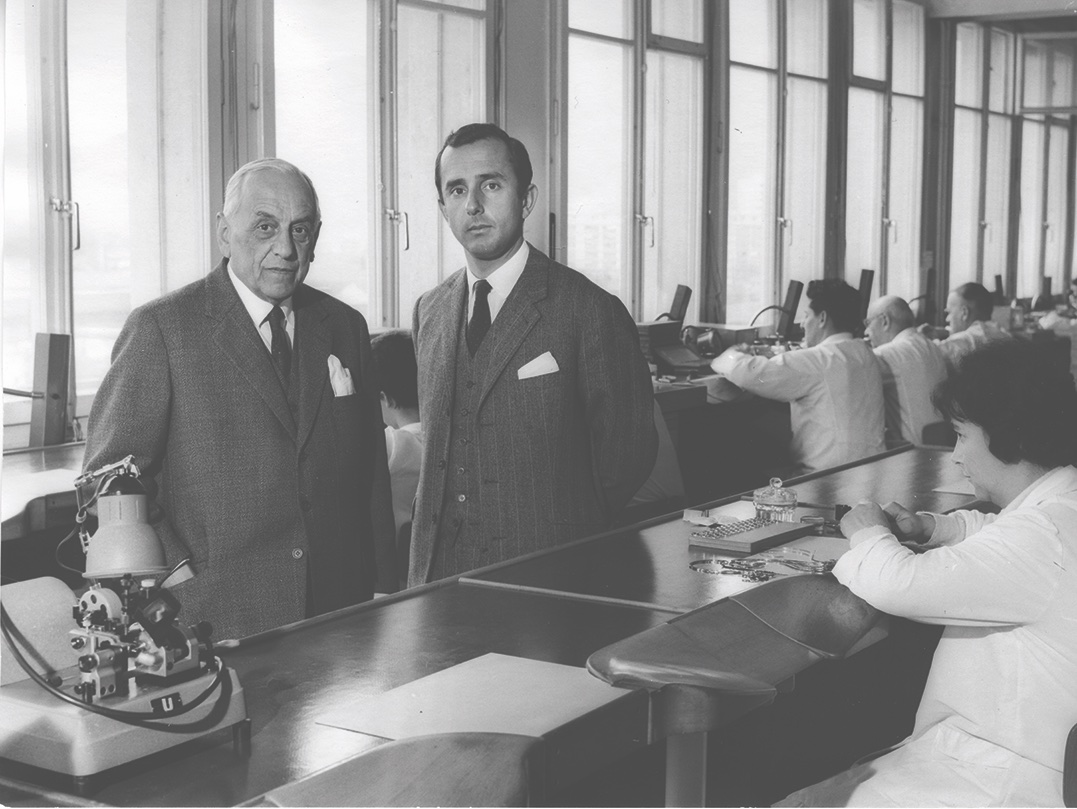
Founded in 1860 by Edouard Heuer in St. Imier, the company quickly carved its place in horological history. In 1887, it secured a patent for the improvement of the oscillating pinion, a compact coupling device that allowed chronographs to be engaged with speed and reliability. By the early 20th century, Heuer’s reputation as a precision specialist was already cemented. In 1911 came the Time of Trip, the world’s first dashboard chronograph, designed for both automobiles and aircraft. Just five years later, in 1916, Heuer launched the Mikrograph, the first stopwatch capable of recording 1/100th of a second, a level of precision that transformed sports timing and positioned the company as a partner of choice for racing officials, Olympic federations, and ski competitions.
The interwar years saw Heuer further refine this role. In 1933, the company introduced the Autavia dashboard timer (from AUTomobile and AVIAtion). Mounted on the dashboards of rally cars and cockpits of aircraft, the Autavia became a byword for robust functionality. Heuer also expanded into wrist chronographs during this period, often retailing them through Abercrombie & Fitch in New York. The outfitter carried Heuer’s chronographs and commissioned special models such as the Solunar, which displayed tidal cycles, and the Mareographe, the first chronograph with both tide and regatta timing. These dual-signed Abercrombie watches illustrate how deeply Heuer’s reputation for professional-grade timing had penetrated the American sporting market well before the Carrera name existed.
1950s-1960s – the Pre-Carrera Chronographs
By the mid-1950s, Heuer was experimenting with larger wrist chronographs that anticipated the Carrera. Beginning around 1955, the company offered tri-compax chronographs with Valjoux movements housed in water-resistant cases, their dials marked with luminous plots and calibrated with tachymeter or telemeter scales. Advertisements promoted them explicitly for “Drivers and Rallyists”. Their resemblance to Rolex’s pre-Daytona references (6034, 6234, and later 6238) was no coincidence: Heuer and Rolex sourced movements from Valjoux and dials from Singer, resulting in a similar appearance: silver or black dials, balanced registers, and sober but sporting proportions.
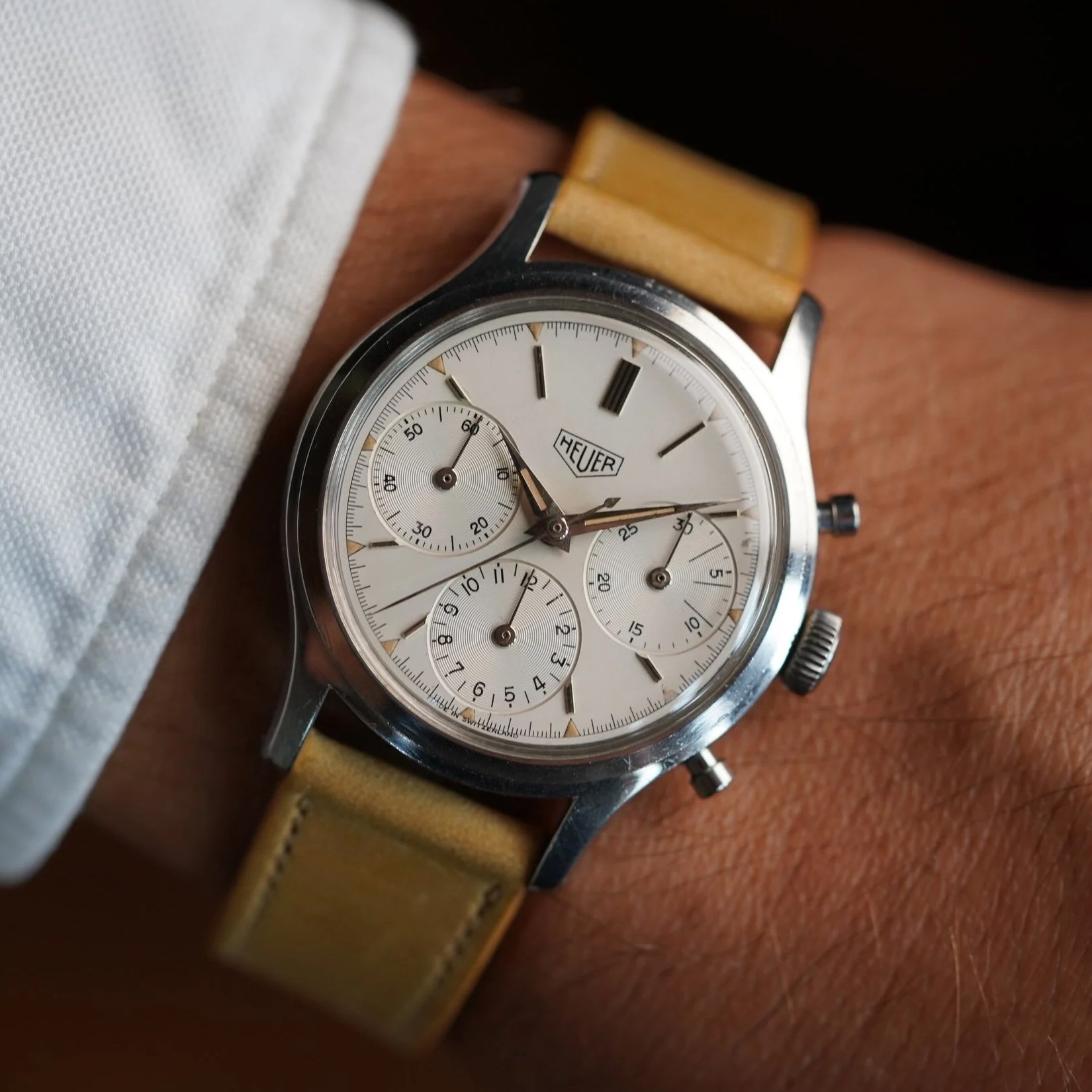
Two references in particular stand out from this pre-Carrera era: the 2444 and the 3336, offered in “S” (Soleil, or sunburst silver) and “N” (Noir, black) executions. The 3336 often carried an outer tachymeter scale, while the 2444 sometimes included red highlights to enhance legibility. These models highlighted the dual character of Heuer’s chronographs: tools designed for professionals, but with an understated elegance that made them equally suitable off the track.
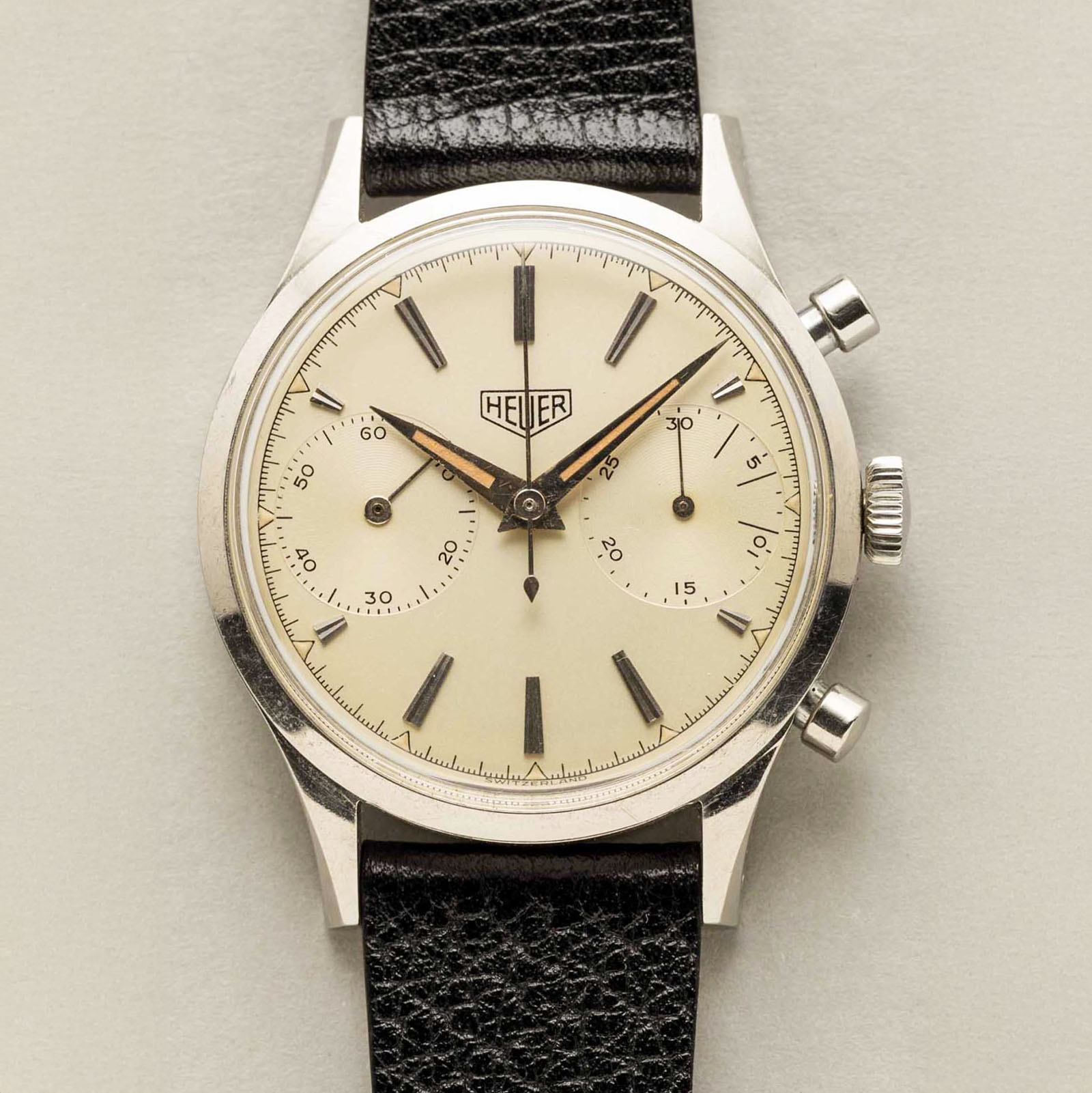
Occasionally, one encounters pre-Carrera examples of the reference 2447: even without the Carrera name on the dial, the essentials were already in place: sharp faceted lugs, a screw-down caseback for water resistance, and a dial defined by clarity and proportion. In retrospect, these late-1950s 2447s are some of the unmistakable stepping stones to the watch Heuer would unveil a few years later.
1958-1962 – Jack Heuer, Autavia Chronograph, 12 Hours of Sebring
Jack Heuer, great-grandson of the founder, formally joined the company in 1958 at the age of 26. Trained as an engineer at ETH Zurich, he applied his systematic design thinking to timing instruments. One of his first projects was to replace the ageing Autavia dashboard timer with a more legible model. The result, launched in 1958, was the Monte Carlo, notable for its jumping hour disc that could be read instantly at speed. Two years later, Heuer celebrated its centenary with the “Century” line of stopwatches, which re-engineered the company’s core product with cleaner, more modern dials.
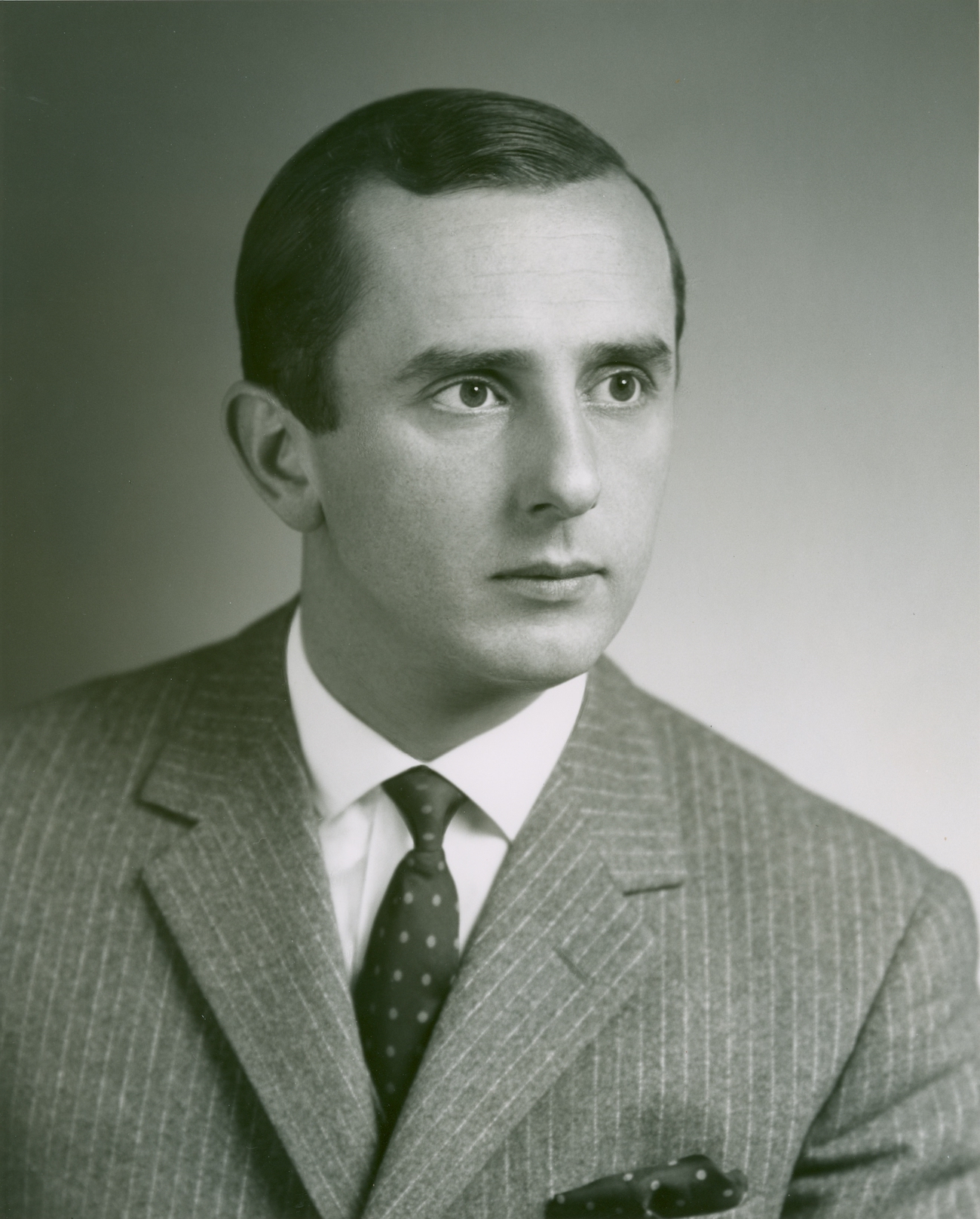
By 1961, he had acquired majority control of the company, ensuring that its future direction lay firmly in his hands, and his attention soon turned to wrist chronographs. At Basel in April 1962, he introduced the Autavia wrist chronograph, reviving the name of the discontinued dashboard timer. It was Heuer’s first chronograph with a rotating bezel, setting a new standard for legibility and utility. As Jack Heuer later recalled: “The Autavia confirmed what I already knew – that motorsport demanded instruments designed for absolute clarity under pressure.”
That same year, on March 23–24, 1962, Jack attended the 12 Hours of Sebring, supplying timing equipment to organisers and teams. In the pits, he met the parents of Pedro and Ricardo Rodríguez, Mexico’s prodigiously talented young drivers. They told him stories of the Carrera Panamericana, the legendary open-road race across Mexico that ran from 1950 to 1954 before being cancelled in the aftermath of the 1955 Le Mans disaster. The word Carrera struck Jack immediately. He later reflected: “It was at Sebring that I first heard the Spanish word ‘Carrera.’ I loved not only its sexy sound but also its multiple meanings – road, race, course, and career. All very much Heuer territory!” On returning to Switzerland in April 1962, Jack moved quickly to secure the name.
By the time the Carrera debuted at Basel in 1963, its DNA was already well established. It was the product of Heuer’s pioneering work in dashboard chronographs, stopwatches, and pre-Carrera wrist models, combined with Jack Heuer’s conviction that legibility and functionality should guide every design decision. The Carrera’s clean dial, sharp case geometry, and intuitive layout made it an instant classic, equally at home on the track and at the dinner table, the perfect expression of Heuer’s long evolution from timing instrument to iconic wrist chronograph.
1963 – The Birth of the Heuer Carrera Chronograph (ref. 2447)
At Basel in April 1963, Heuer unveiled the Carrera reference 2447. Its 36mm stainless steel case with sharp faceted lugs was paired with oversized pushers designed to be operated even while wearing driving gloves. What truly set the Carrera apart, however, was the dial. By moving the chronograph scale to an angled tension ring beneath the crystal, a device that also improved water resistance, Jack created the most legible chronograph face of its era. The registers were slightly recessed, producing a subtle three-dimensionality that enhanced readability.

The earliest executions of the 2447 carried forward this philosophy in different guises. The 2447N presented a black dial; the 2447S offered a silver dial with tone-on-tone registers in a more understated guise. Soon followed the 2447NT, which featured a tachymeter scale encircling the dial, and the 2447P, a pulsometer version likely purchased by physicians. By 1964, tachymeter reference 2447T introduced red accents for a more technical feel. All were powered by the robust Valjoux 72, their bridges signed “Ed. Heuer & Co.”.
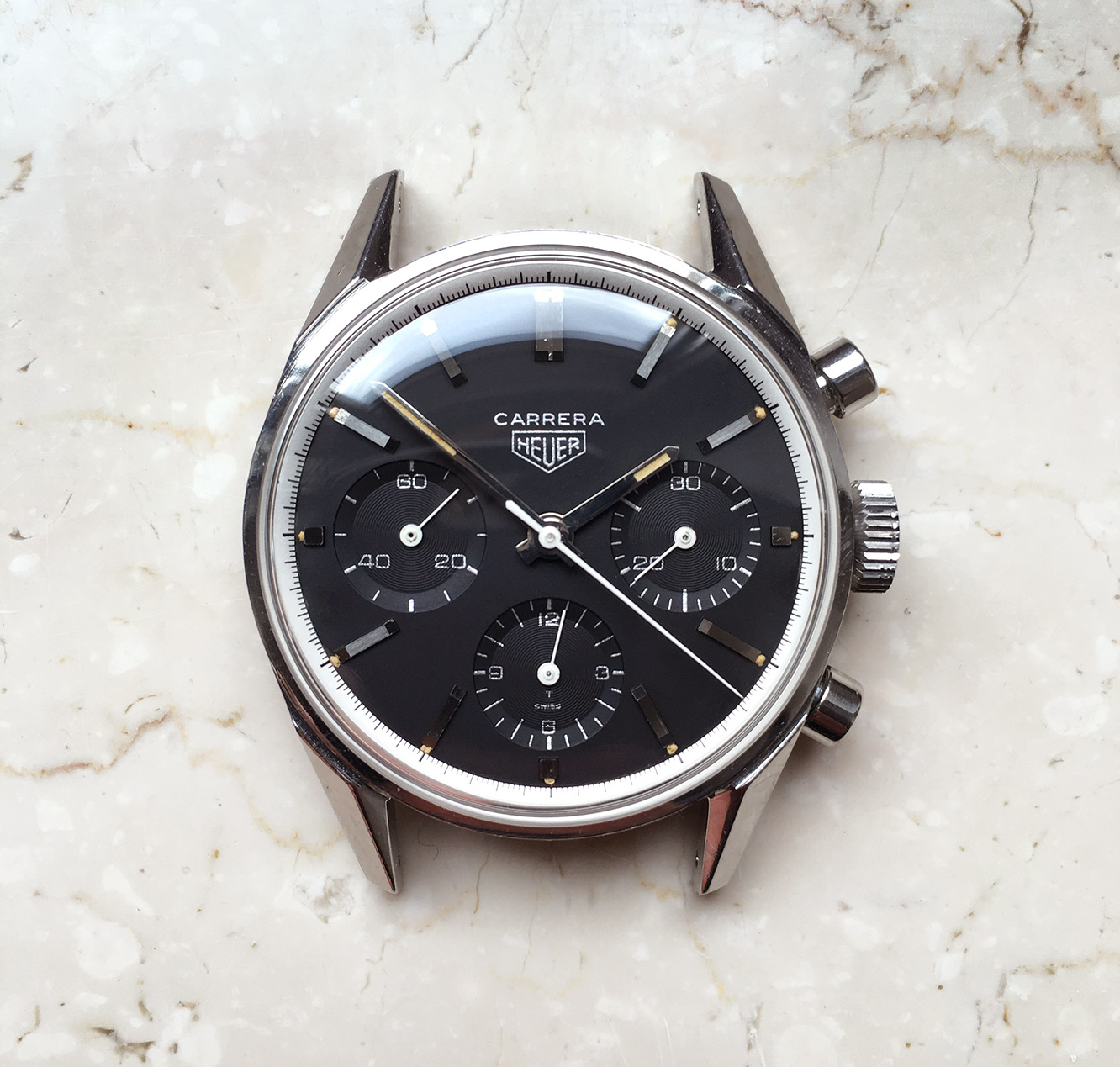
Later in 1963, Heuer launched the Carrera reference 3647, equipped with the Valjoux 92 and two registers rather than three. Slightly less expensive, the 3647 maintained the clean aesthetic of the 2447 while offering buyers a more streamlined option. Versions with tachymeter scales, such as the 3647NT, added further utility without sacrificing clarity.
1964–1965 – Refinements and Contrasts
By late 1964, the Carrera was refined into what collectors call the second generation of the 2447. These watches introduced high-contrast dials: the 2447SN with its silver base and black registers, and the 2447NS with the reverse combination. They reflected Jack’s growing insistence on maximum legibility, even in the cockpit. More unusual were executions like the 2447SND, which combined a decimal scale with the panda layout, and the 2447SNT, a reverse panda dial paired with a tachymeter.
1965-1968 – The Dato Carreras
The subsequent development was to integrate a calendar function. In 1965/66, Heuer released the Carrera 3147 “Dato 12”, placing a date window at 12 o’clock. It was an attempt at symmetry, but wearers quickly discovered that the chronograph’s central seconds hand obscured the date. And so, in response, Heuer introduced the “Dato 45”, moving the date to 9 o’clock and balancing it against a 45-minute counter at 3. Though asymmetrical, it became a favourite for its quirkiness. By 1968, the Carrera Triple Calendar, reference 2547, combined day, date, and month indications with a chronograph, marking one of the most complicated Carreras of the decade, even though it was only designated as such in the catalogue and did not bear the series name on the dial, not to mention a different case design.
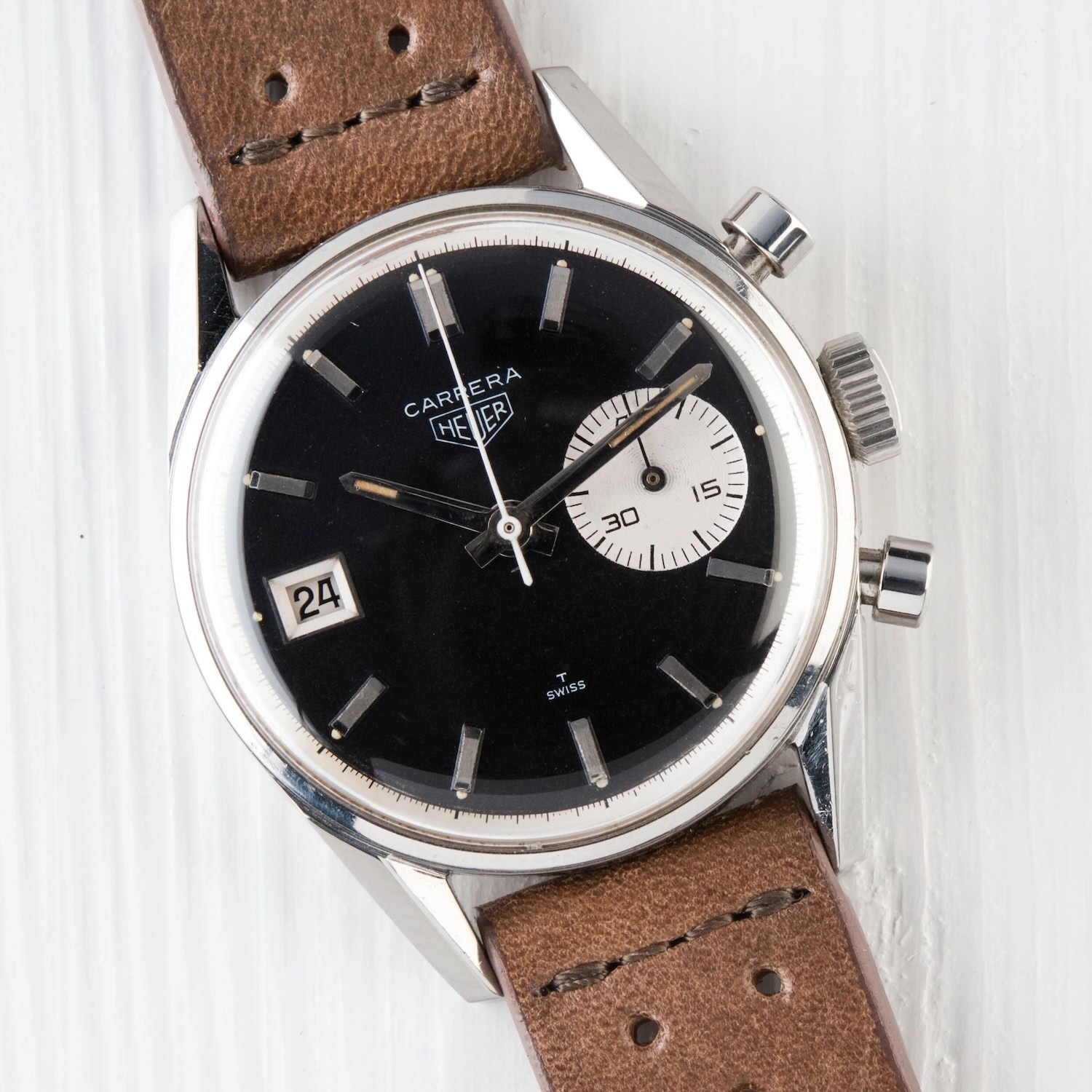
1969 – The Automatic Revolution
The most profound career change arrived earlier, in March 1969, when Heuer, in collaboration with Breitling, Hamilton-Buren, and Dubois Dépraz, announced the Calibre 11 “Chronomatic”, one of the world’s first automatic chronograph movements. At the Basel fair that year, the Carrera joined the Monaco and Autavia in receiving this new calibre. To house it, the Carrera adopted a new tonneau-shaped, or “C-shaped”, case, more substantial than the elegant 36-millimetre original. Unlike the sharp-lugged, angular design of the 1960s, the C-shaped profile featured rounded flanks and integrated, flowing lugs that gave the watch a softer silhouette, more in line with the aesthetics of the early 1970s.
The first automatic Carreras, such as the reference 1153N, launched in 1969, featured the “Chronomatic” designation on their dials. By the following year, the wording was changed to “Automatic Chronograph” for both clarity and marketing precision. In this early series, the 1153BN stood out with its deep blue dial and bright orange regatta-style accents, while the 1553N, introduced in 1972 with the revised Calibre 15, replaced the traditional 12-hour counter with a running seconds display at 10 o’clock. Toward the end of the decade, references such as the 110.253G with a grey dial and the strikingly iridescent blue 110.253B (both from 1978) pushed the Carrera’s aesthetics further into the vibrant 1970s. At the pinnacle of the range sat the 18-karat gold 1158 series, produced from 1971 and forever associated with Ferrari Formula 1. Jack Heuer famously presented these watches to team drivers during the company’s sponsorship of Scuderia Ferrari.
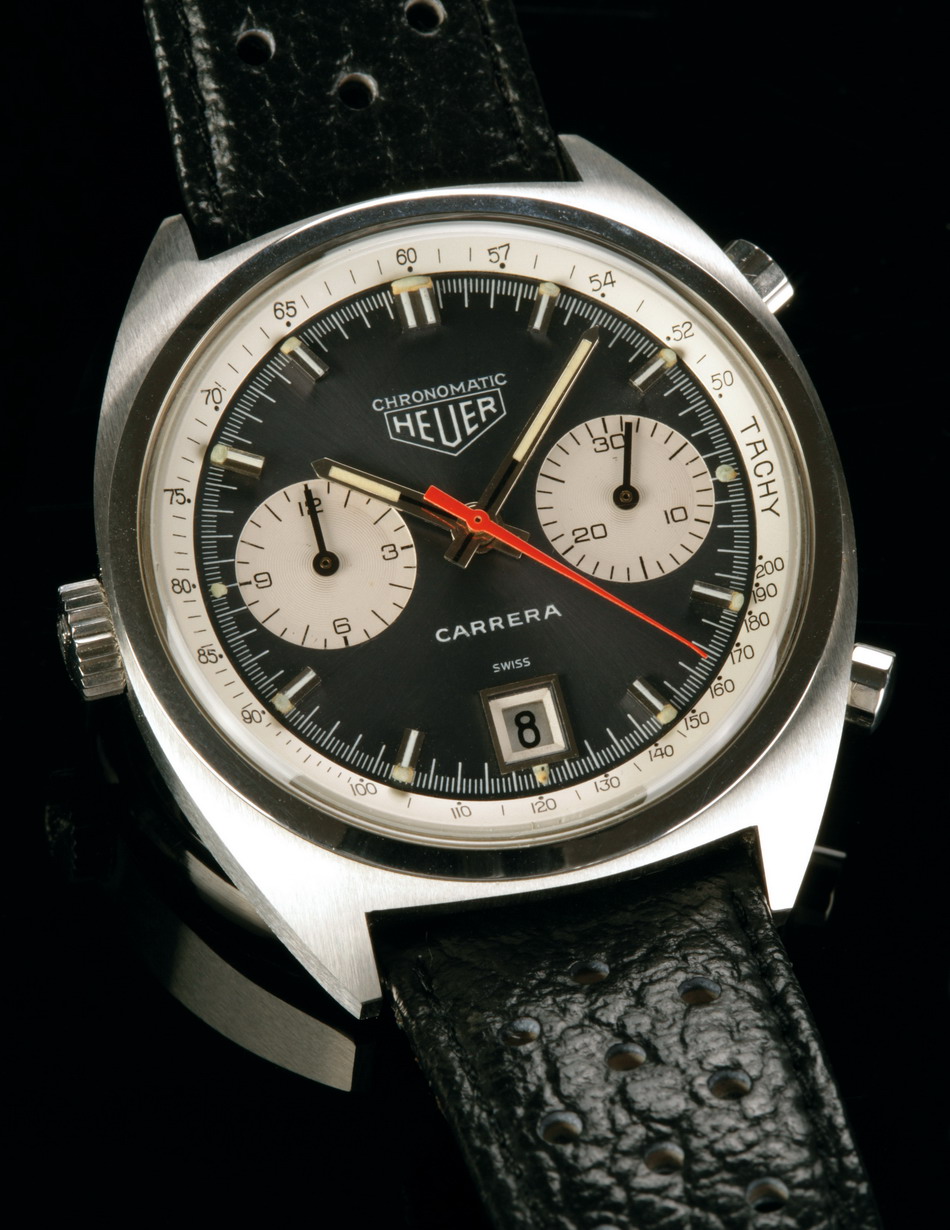
Running parallel to these automatic models, Heuer continued to produce hand-wound Carreras in the distinctive C-shaped case throughout the 1970s. References such as the 7853S, 73653N, and 73655SP with a pulsation scale, powered by Valjoux manual movements, offered both two- and three-register layouts. They carried forward the Carrera’s hallmark clarity, with crisp dials and contrasting sub-registers; yet, their case architecture reflected a broader shift in watch design, being larger, sculptural, and unmistakably of their era. For purists who prized the slimness and tactile ritual of winding by hand, these C-shaped Carreras bridged the gap between the original 1960s spirit and the bolder, more experimental chronographs of the 1970s.
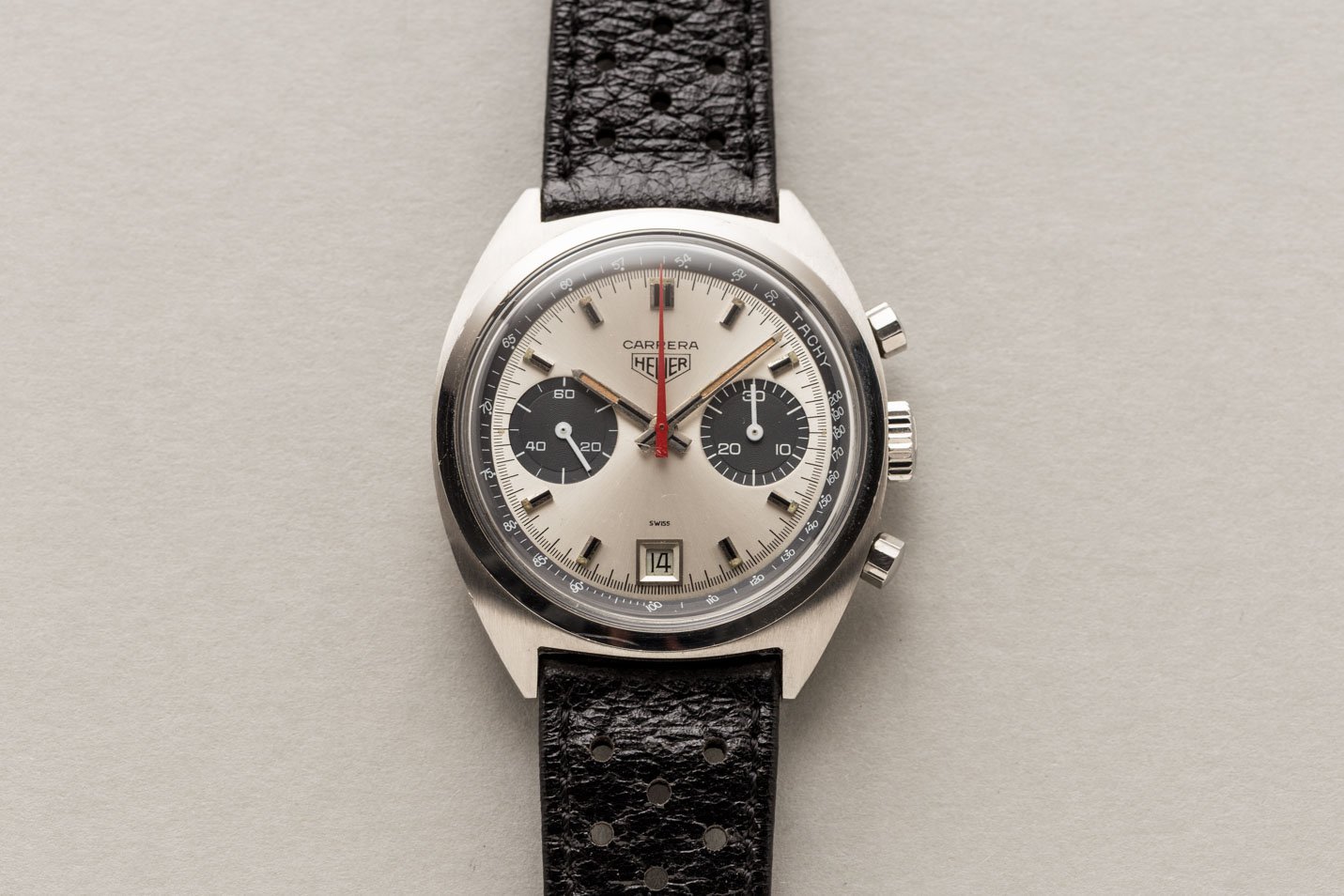
1970 – New Movements, New Faces
In 1970, the reference 7753 appeared, housing the Valjoux 7730 in a two-register Carrera with a 30-minute counter. The same year saw one of the rarest Carreras of all: the Skipper, reference 7754, which adopted the Carrera case but a dial tailored for regattas, with a colourful tri-segment countdown counter.
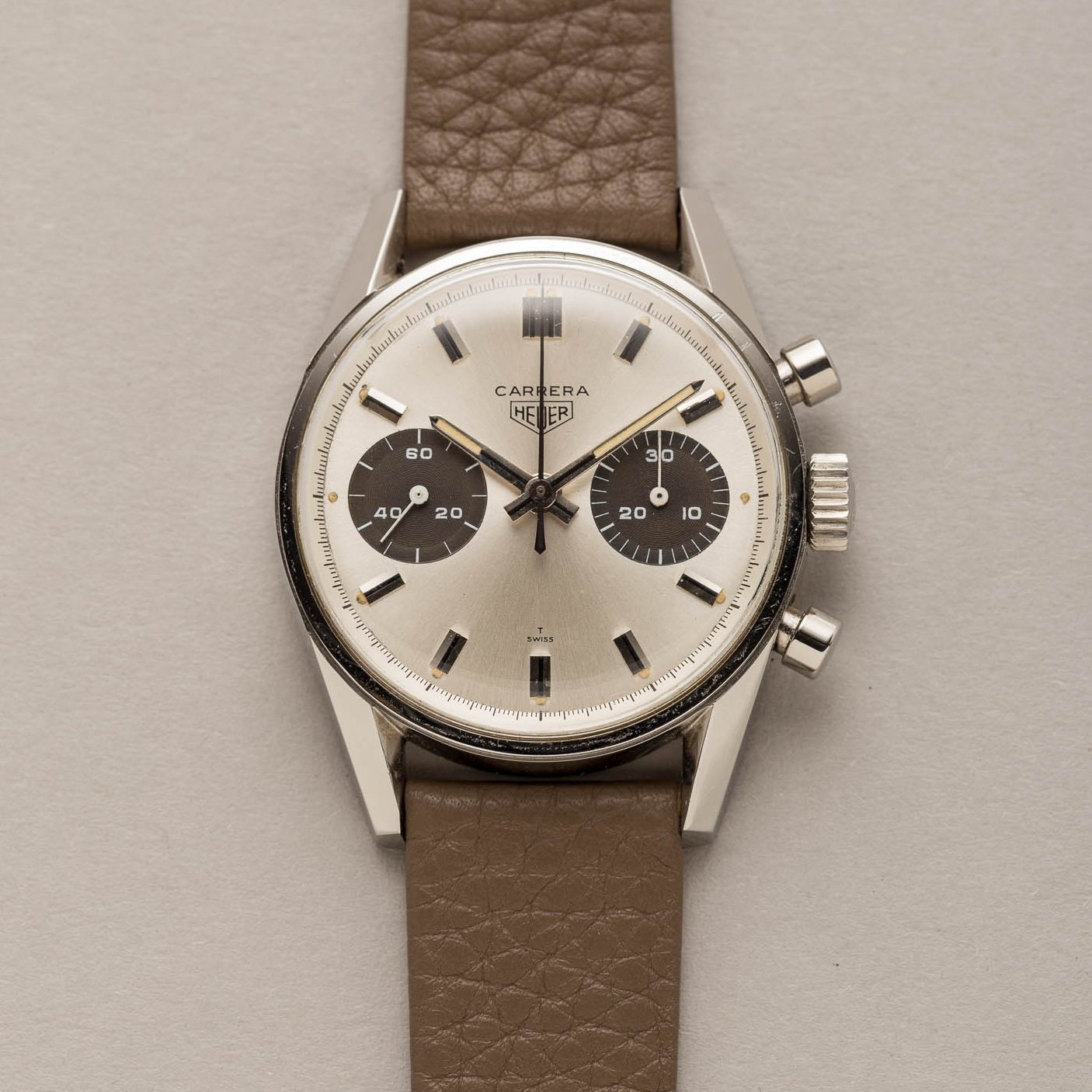
1974-1977 – The Barrel Period
From 1974, the Carrera’s design language shifted again. The round and C-shaped cases gave way to thicker “barrel” profiles, seen in references such as the 110.573F with Calibre 12, or the black-coated 110.571NC from 1977. The 150.573B with Calibre 15 and running seconds at 10 o’clock exemplified the decade’s aesthetic. These watches, though far removed from the clean lines of the 1963 original, captured the boldness of the 1970s.
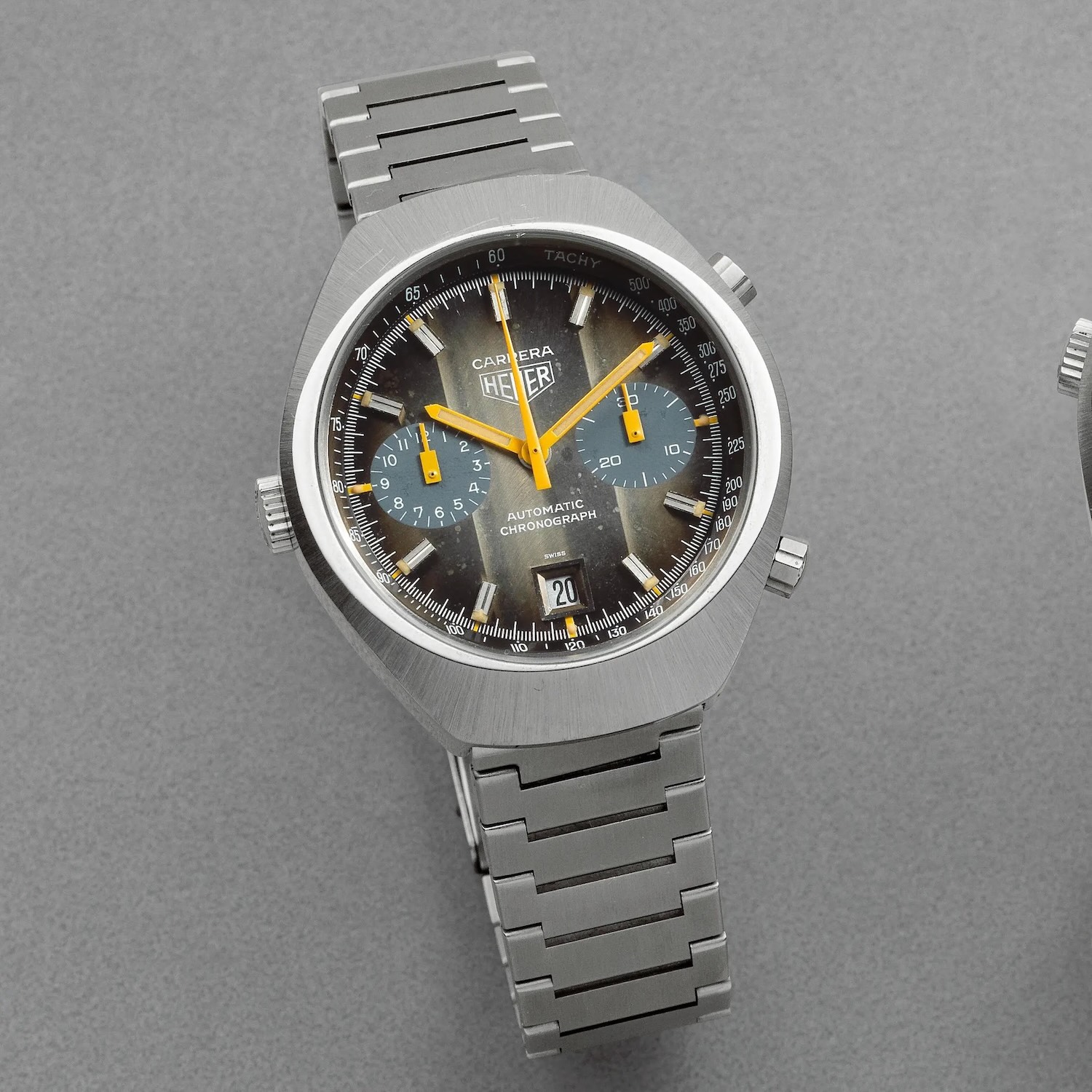
1978-1981 – Quartz and Compromise
As the Quartz Crisis intensified, Heuer launched quartz Carreras in 1978. The reference 365.253N was the first three-hand Carrera, while hybrid analogue-digital “Twin Time” models combined hands for the hours with digital chronograph functions. Though seemingly less romantic now, these watches illustrate the company’s determination to innovate under pressure.
1982-1985 – The Lemania Carreras
In January 1982, financial difficulties forced Jack Heuer to sell the company to a consortium including Piaget and Nouvelle Lemania. Lemania’s involvement brought the robust 5100 calibre to the Carrera line. The reference 510.523 in stainless steel, with bright orange hands and a utilitarian black dial, and the black-coated 510.511, kept the Carrera name alive into the early 1980s. Yet by 1985, when Heuer was acquired by Techniques d’Avant Garde (TAG), the Carrera disappeared from the catalogue altogether.
1996 – The Heuer Carrera Chronograph Reborn
After more than a decade of absence, the (TAG) Heuer Carrera made its dramatic return in 1996. TAG Heuer’s decision was both bold and cautious: bold in reviving a watch few outside specialist collectors remembered, cautious in how faithfully it followed the original 1963 formula. These were not modern reinterpretations but careful recreations.
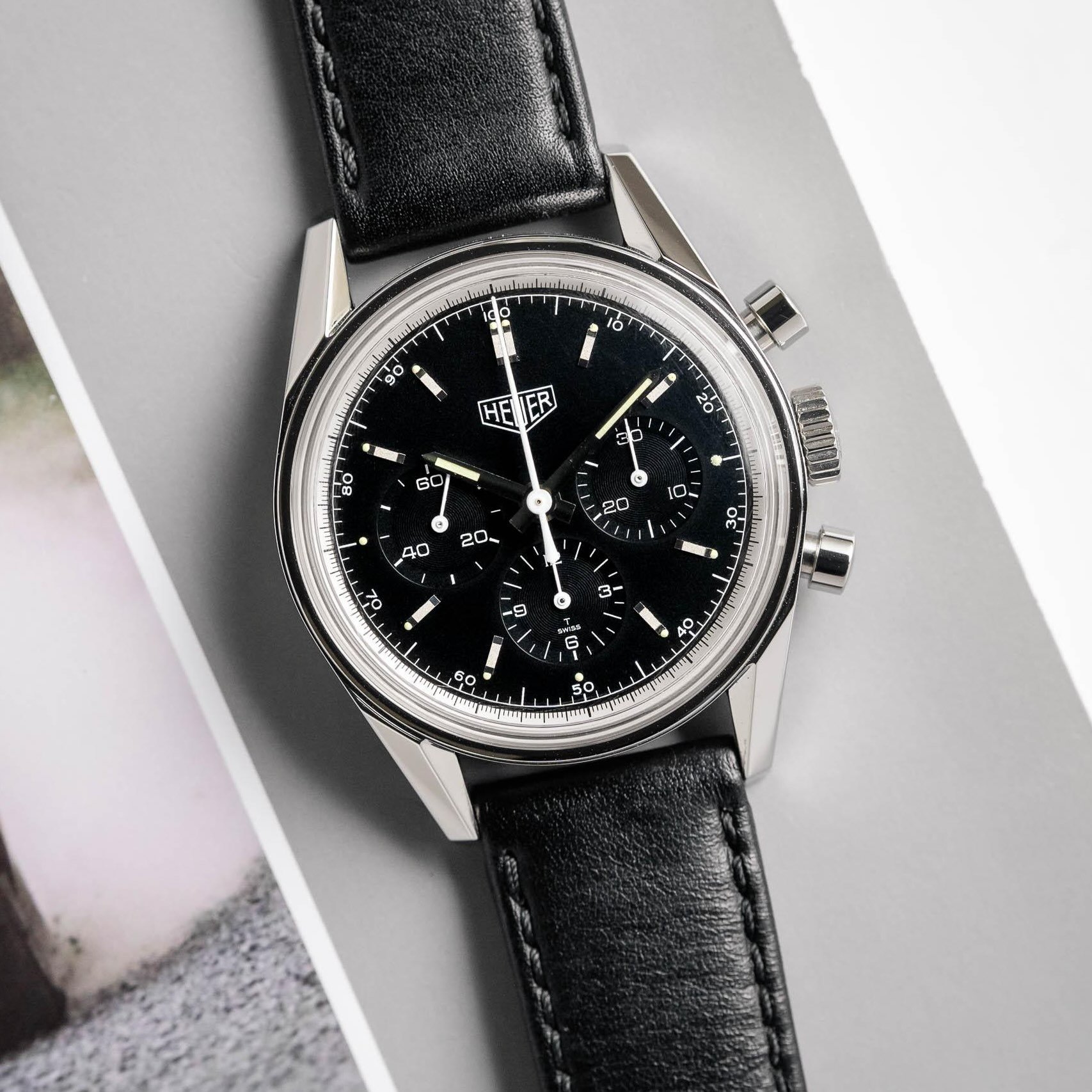
Three references were introduced at launch. The CS3111 carried a black dial with white sub-registers in a stainless steel case; the CS3110 offered the same configuration in silver; and the CS3140 elevated the concept to 18k yellow gold with a silver dial. At 36mm, their proportions matched the 1960s originals exactly, with long faceted lugs, slim bezel, and simple pump pushers. The dials, too, echoed the first Carreras: minimalist, with sharply printed scales and recessed registers. Even the decimal minutes track, a detail found on one of the 1963 executions, was faithfully recreated.
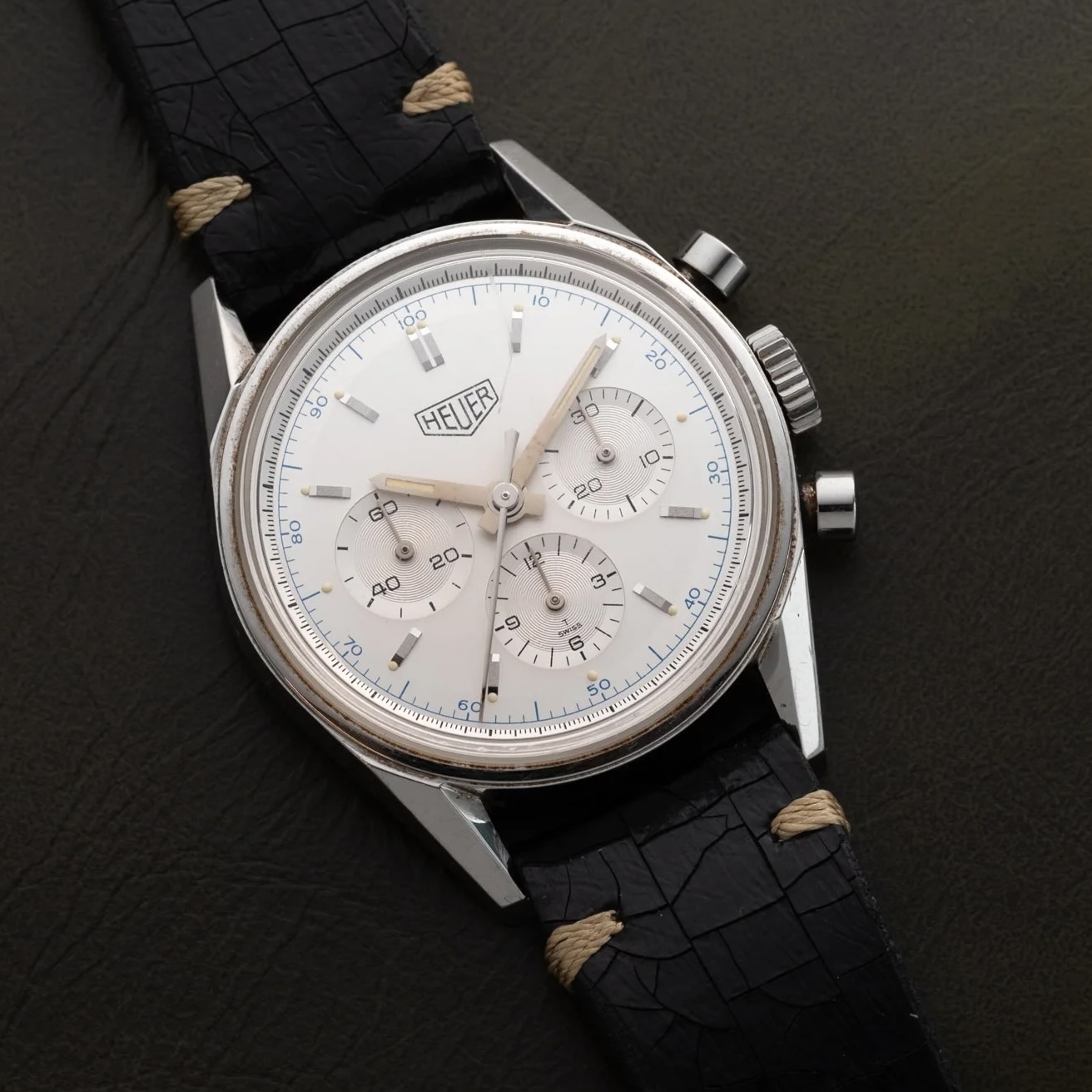
Inside, however, worked a modern hand-wound Lemania 1873 movement rather than the vintage Valjoux 72. This was a deliberate choice. The Lemania, widely respected for its role in the Omega Speedmaster, ensured reliability and accuracy while retaining the tactile charm of a hand-wound calibre.
There were small but telling differences. On the original 1963 watches, “Carrera” appeared above the Heuer shield; on the 1996 re-editions, the series name was not mentioned. Collectors quickly learned this was the easiest way to tell them apart. For the rest, these watches were so true to the spirit of the originals that they helped ignite a vintage Heuer collecting movement that barely existed before.
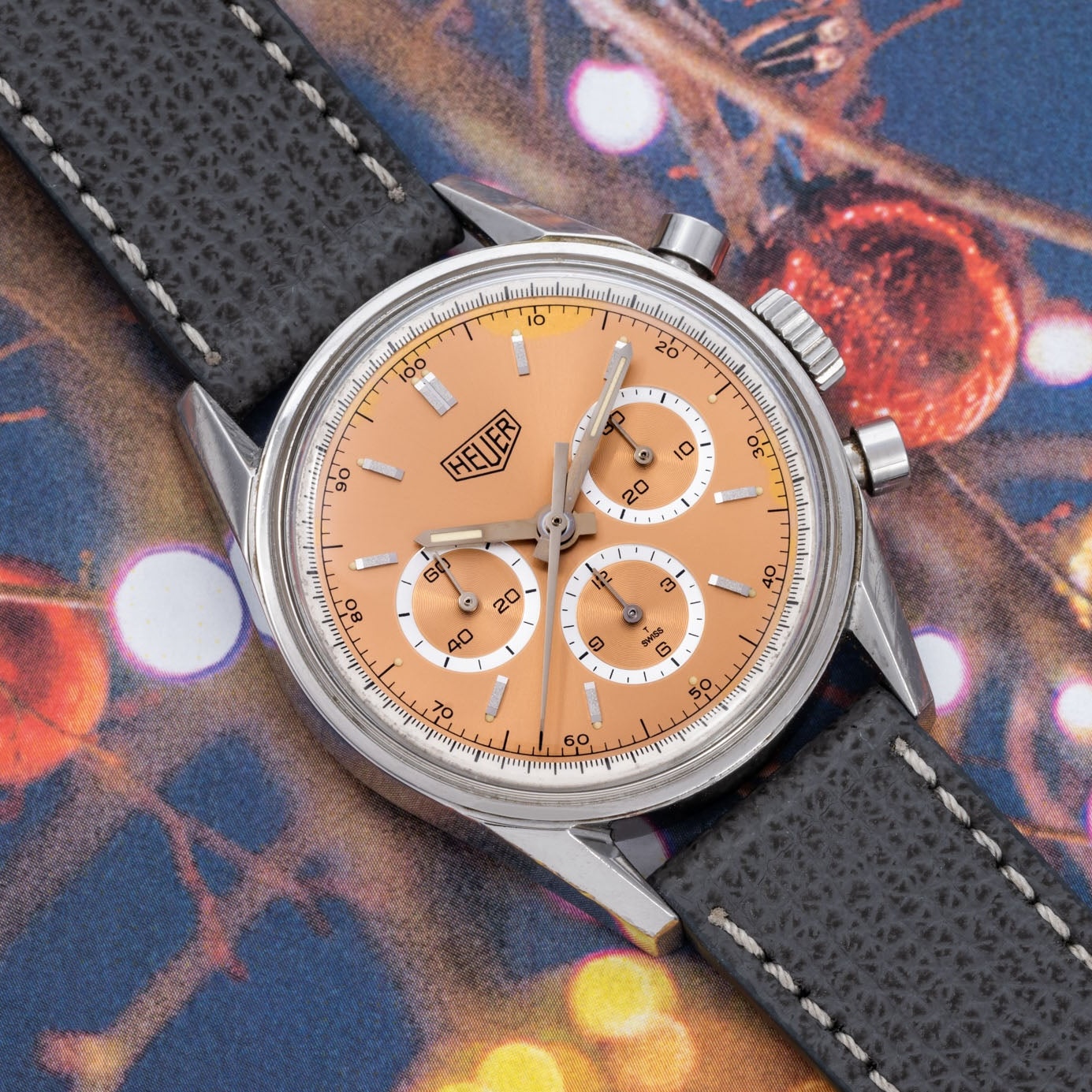
By the late 1990s, TAG Heuer cautiously broadened the line. The CS3112 introduced a salmon-pink dial with contrasting register rings, while a black-dial variant with silver “Daytona-style” rings offered contrast. These additions, though modest, marked the moment when the Carrera shifted from being a strict homage project into something more flexible – a platform ready for reinterpretation.
2000-2004 – The Classics and Expansion
The acquisition of TAG Heuer by LVMH in 1999 set the stage for the Carrera’s evolution. In 2000, new CEO Jean-Christophe Babin repositioned the Carrera as a permanent pillar of the catalogue. Jack Heuer was invited back as Honorary Chairman, reconnecting the brand to its roots.
The “Classics Collection” expanded the Carrera beyond reissues. Non-chronograph references WV2112 (white-dial three-hand automatic) and WS2113 (black-dial GMT) moved the design toward modernity, with Arabic numerals, railroad minute tracks, and ETA automatic movements.
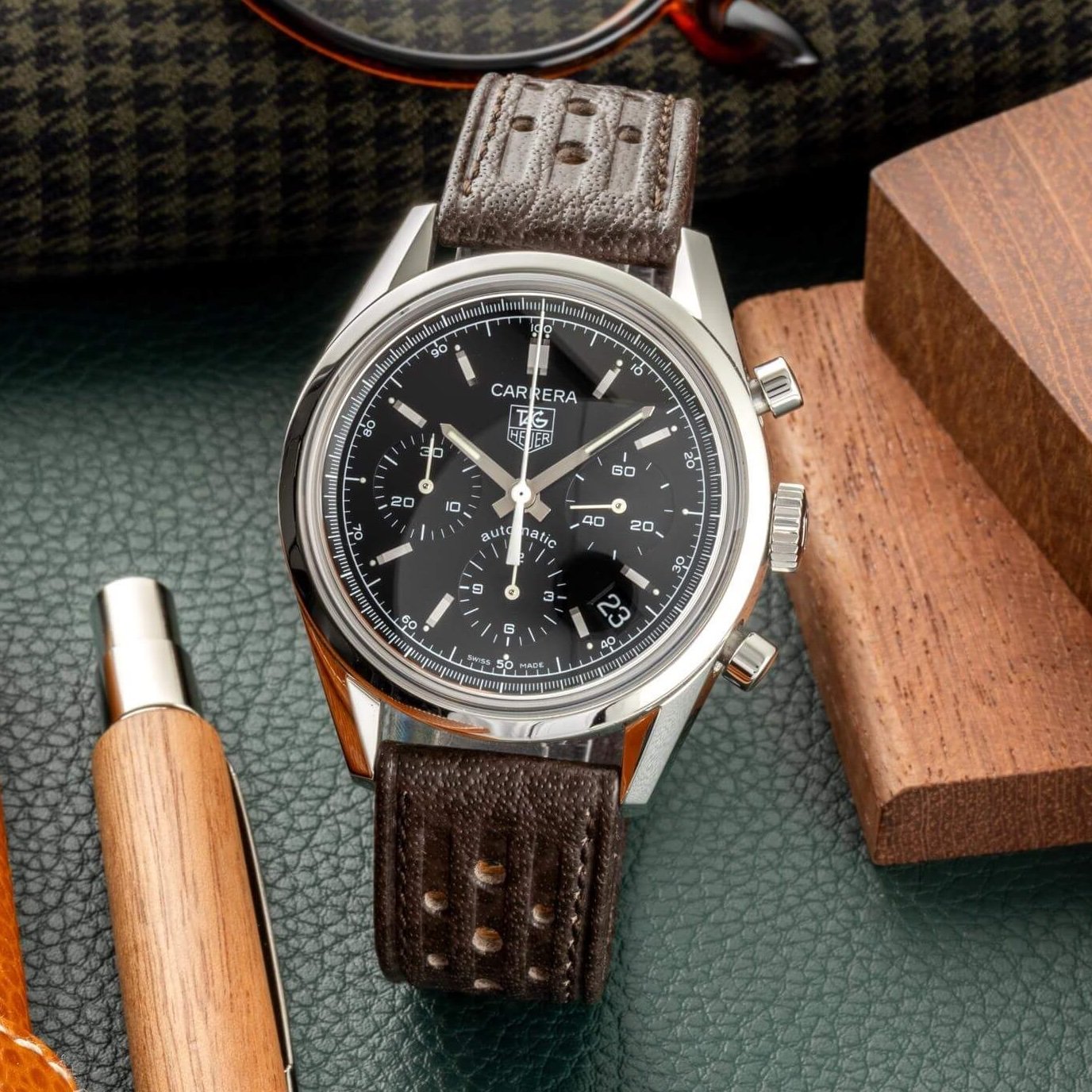
In 2002, TAG Heuer addressed the market demand for larger watches by scaling the Carrera to 39mm. Three automatic Calibre 17 models were launched: CV2110 (white dial), CV2111 (black dial), and a striking variant with silver sub-dial rings often nicknamed the “Daytona rings”. Each added a date window at 4:30.
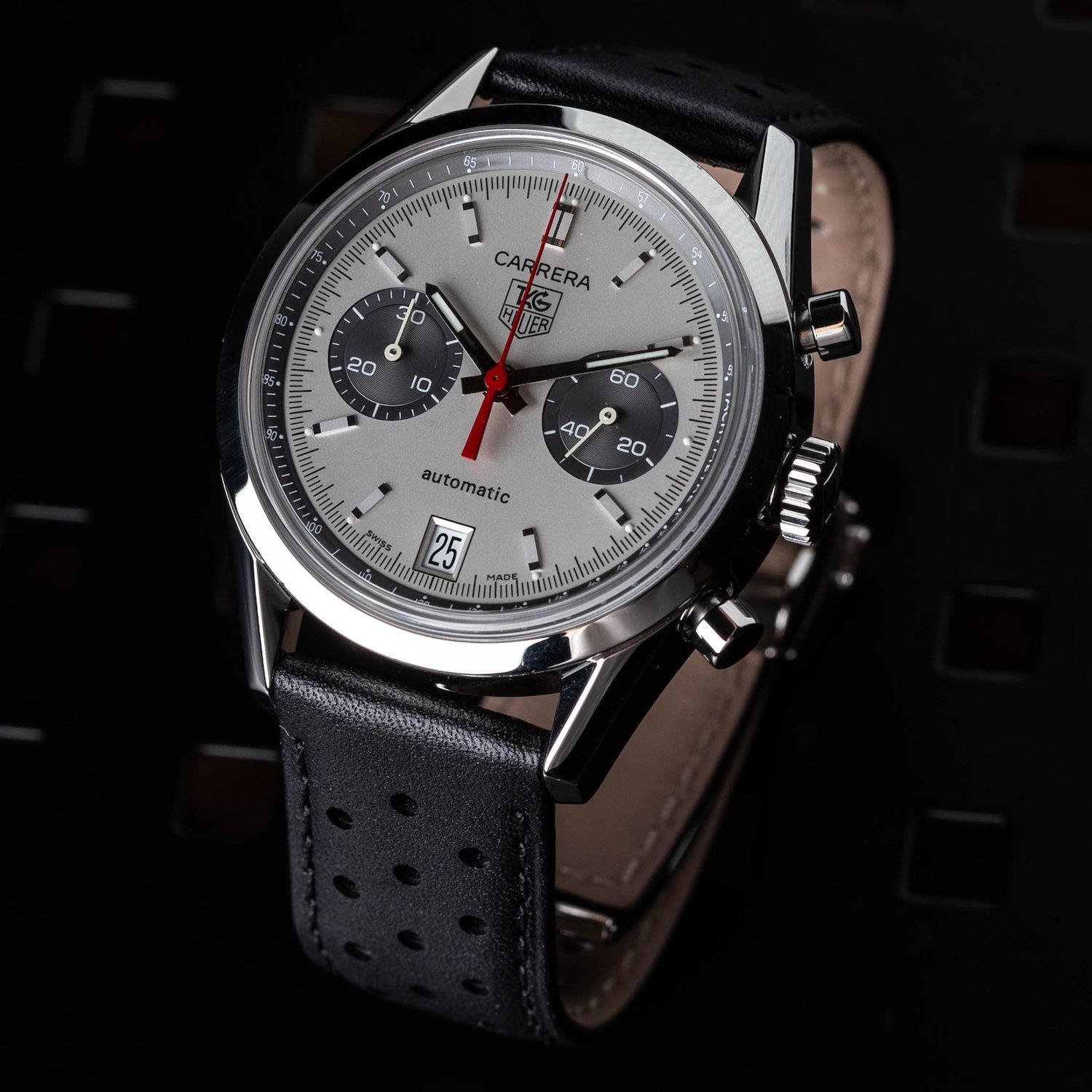
Special editions reinforced the Carrera’s heritage. The 40th Anniversary Carrera of 2004 (CV2117) featured grey tones with red highlights, soon dubbed the “Jack Heuer colours”. In 2005, the Ennstal Classic Rally edition (CV2118) introduced bold red stripes on the chronograph minute counter, linking the watch to competitive motorsport.
2004-2009 – From Heritage to Modernity
In 2004, TAG Heuer released a bolder Carrera line, the CV20XX series, marking the first appearance of a fixed external tachymeter bezel on the model. Measuring 41mm, these watches retained the Carrera’s signature lugs but introduced a sportier, more aggressive identity.
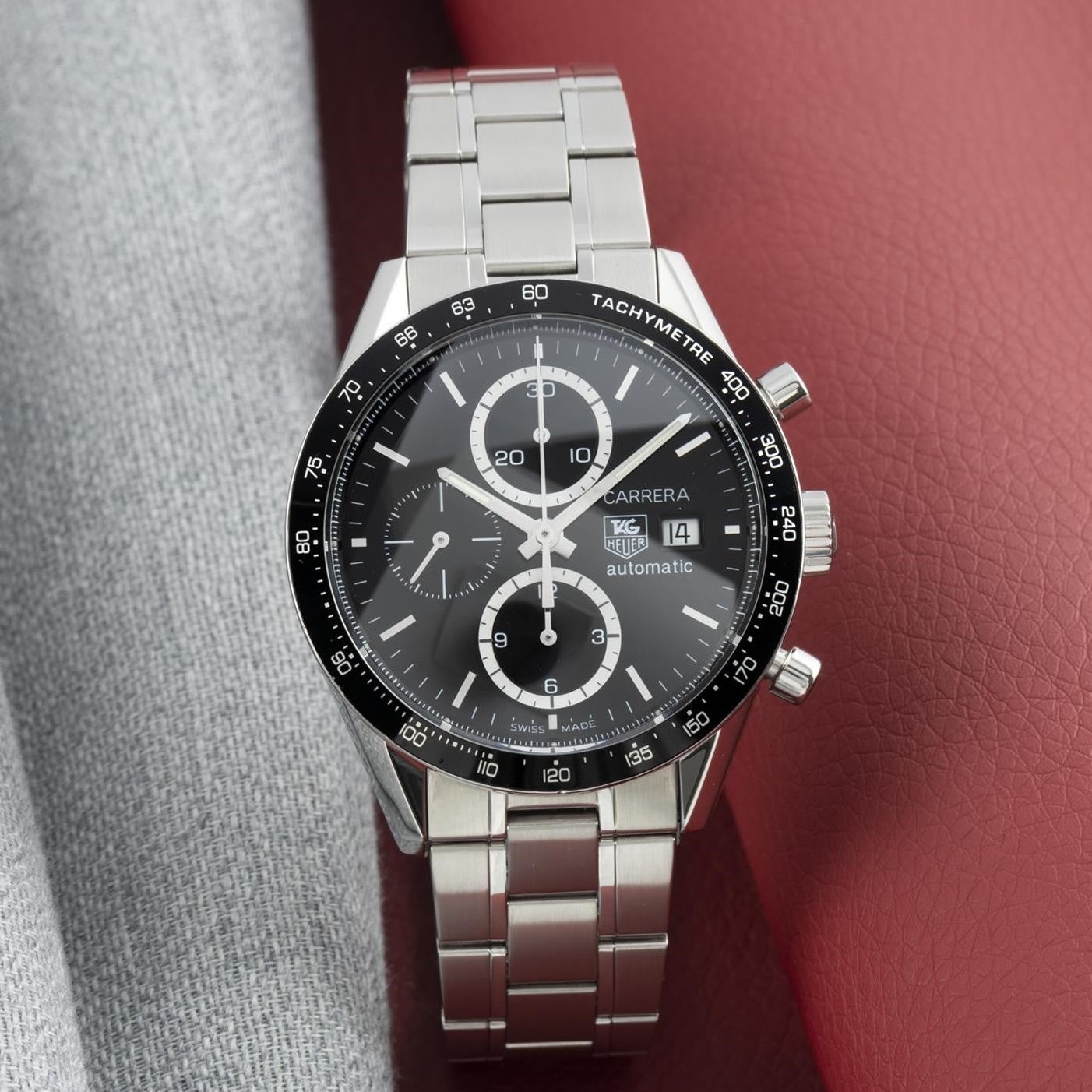
Powered by the automatic Calibre 16 (based on the ETA/Valjoux 7750), these Carreras adopted the familiar 12-9-6 layout with a date at 3 o’clock. The dials were busier than their ancestors, but for many, this became the definitive Carrera of the early 2000s: a modern, technical racing chronograph with visible motorsport DNA.
TAG Heuer also pushed into horological experimentation. The Carrera Calibre 360, unveiled in 2005, measured 1/100th of a second, with a dedicated register to display these increments. Produced in small numbers, it announced TAG Heuer’s ambition to reassert itself as an innovator.
2010 – Calibre 1887 and the Experimental Movements
In 2010, the widely debated Carrera Calibre 1887 arrived. This was the first Carrera to house a movement produced by TAG Heuer. Based on the architecture of Seiko’s TC78 but re-engineered in Switzerland, the Calibre 1887 operated at 28,800 vibrations/hour, offered a 50-hour autonomy, and featured a column wheel with vertical clutch.
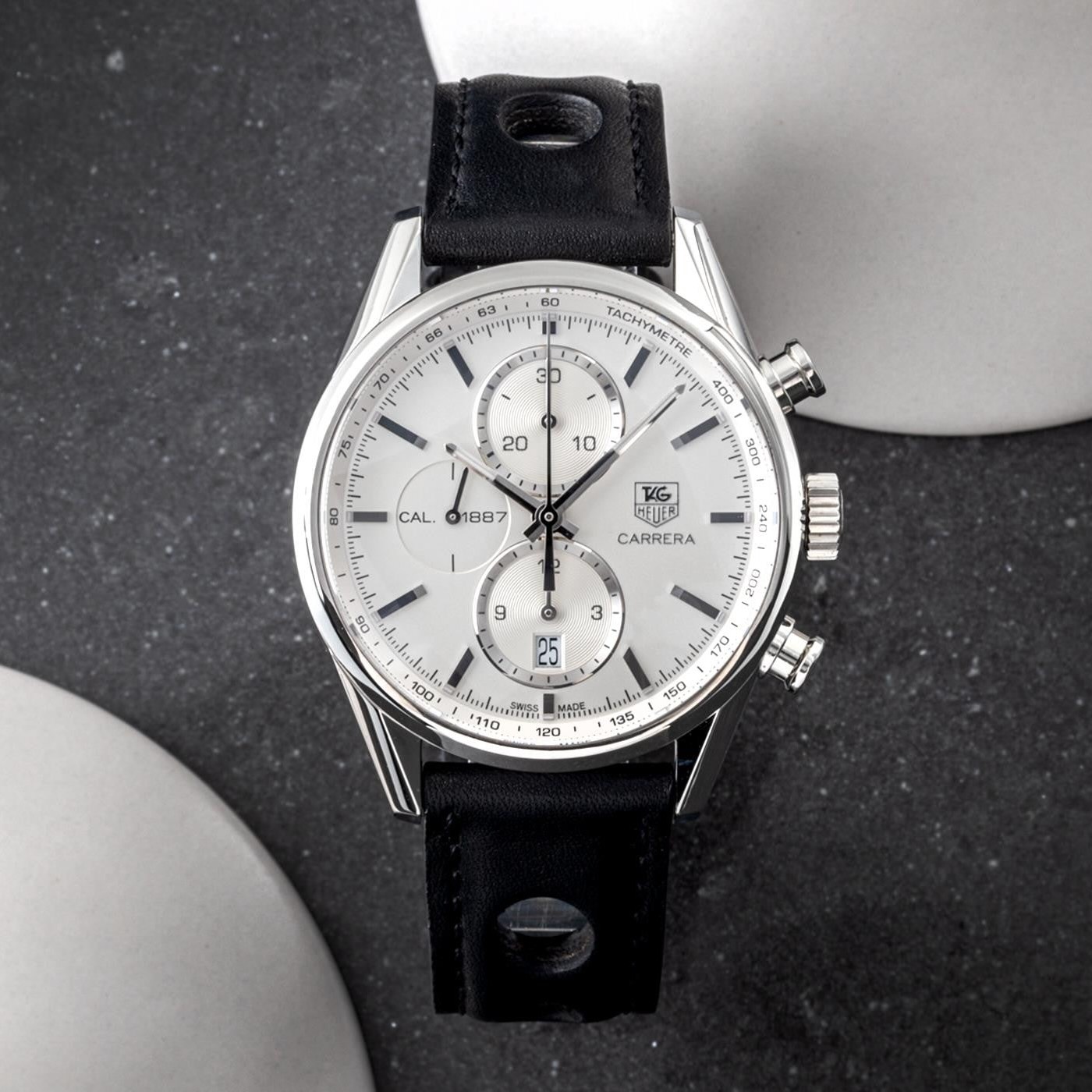
The design looked back to 1963: a clean dial with applied markers, an inner bezel with crisp divisions, and polished baton hands. Yet with a 41mm case, sapphire crystal, and modern proportions, it was a Carrera for a new generation.
Parallel to this, TAG Heuer launched its experimental Mikrograph, Mikrotimer, and Mikrogirder, which achieved timing precision to 1/100th, 1/1000th, and even 5/10,000th of a second. These avant-garde mimers, though far removed from Jack Heuer’s minimalist vision, demonstrated how the Carrera could serve as a platform for “extreme” watchmaking.
2015-2018 – The Modular Carrera Heuer 01 and the Heuer 02
In 2015, under CEO Jean-Claude Biver, the Carrera was reimagined as a modular sports chronograph. The Carrera Heuer 01 featured a 45mm case built from multiple components, allowing a mix of materials and finishes. Its openworked dial showcased the rebranded Heuer 01 movement, a development of the Calibre 1887.
By 2016, 43mm versions like the skeletonised CAR2A1T with a black PVD steel case expanded the line. In 2018, the Heuer 01 gave way to the Heuer 02, an in-house movement offering an 80-hour reserve, a column wheel, and the classical 3–6–9 sub-dial arrangement. The Carrera GMT Chronograph (CBG2A1Z) followed, introducing a dual-time function.
2015 – The Heritage Carreras
Alongside the oversized modular models, TAG Heuer honoured its heritage with a few notable references and collaborations. The first appeared in 2015: the Carrera Calibre 18 Telemeter, a 39mm chronograph with a domed sapphire crystal emulating vintage plexiglass. In 2018, Hiroshi Fujiwara’s TAG Heuer × Fragment Carrera reintroduced the blacked-out minimalist aesthetic of the late 1960s.
2019-2021 – The Carrera Sport Chronograph, 160th Anniversary Models and Beyond
In 2019, TAG Heuer gave the Carrera a more contemporary profile. The 41mm case was fitted with a fixed tachymeter bezel, had shorter lugs, and a slimmer silhouette that sits more comfortably on the wrist. The dial followed the same philosophy of reduction, stripped back to just the essentials: the TAG Heuer shield, the Carrera name, and the word “Automatic”. Inside, the Calibre 16 drove the familiar tri-compax layout with registers at 12, 9, and 6 o’clock, with a date window at 3. Variants included the black-dial CBM2110 and the sunray blue CBM2112.
In July 2020, the brand launched the Carrera Sport Chronograph series. At 44mm, these watches emphasised boldness and legibility, with enlarged chronograph registers, fixed ceramic or steel tachymeter bezels, and the in-house Heuer 02 movement. Variants included the black-dial CBN2A1B, blue-dial CBN2A1A, green-dial CBN2A10, and the black-and-gold CBN2A5A.
That same year, TAG Heuer introduced a more refined 42mm Carrera Chronograph without an external bezel, powered by the calibre Heuer 02. Models like the black-dial CBN2010 and silver-dial CBN2013 (with rose-gold accents) emphasised elegance while retaining racing pedigree, with other variants to include blue and anthracite dials (CBN2011 and CBN2012).
For TAG Heuer’s 160th anniversary in 2020, limited editions joined: the Silver Dial Carrera (CBK221B), inspired by the original 1963 model, the Montreal Edition (CBK221C), blending 1970s colour with Carrera refinement, and the Carrera Sport Chronograph 160 Years “Dato 45” with an unusual date window borrowed from the 1965 Carrera Dato 45.
Also in 2020, for Jack Heuer’s 88th birthday, the brand presented the Carrera Chronograph Jack Heuer Birthday Gold Limited Edition, inspired by a vintage 1970s gold model.
In 2021-22, a teal-dial version (CBK221F) and a fiery Red Dial Limited Edition (CBK221G) further demonstrated the line’s creative reach. All were powered by the Heuer 02 calibre, ensuring modern reliability beneath heritage-driven design.
2023 – Sixty Years of the Carrera and the Glassbox
If the 1996 re-editions proved the Carrera could return, the 2023 60th anniversary models demonstrated how powerfully its design still resonates. To celebrate six decades since the first 2447 was unveiled in Basel, TAG Heuer turned again to the late-1960s panda-dial Carreras for inspiration.
The centrepiece was the Carrera 60th Anniversary Limited Edition (CBK221H.FC8317), a 600-limited release that faithfully echoed the 2447SN. The watch carried a crisp silver dial with black sub-registers, applied steel markers, and polished baton hands tipped with lume. Every detail leaned on heritage: the Heuer shield, the Carrera signature, the domed sapphire crystal shaped to mimic vintage plexiglass.
At 39mm, the case was slightly larger than the vintage 36mm, striking a balance between fidelity and contemporary wearability. Inside ticked the in-house Heuer 02 calibre, which brought back the classical 3–6–9 sub-dial layout, closely matching the Valjoux 72-driven originals while providing 21st-century reliability. The rotor visible through the transparent caseback was engraved with “60 Years of Carrera”, making clear the commemorative intent. Strapped to black perforated leather, the watch felt both of its time and timeless, the very spirit of the Carrera distilled once again.
The 60th Anniversary Limited Edition stood apart: a modern instrument that captured the purity of Jack Heuer’s original vision in a way that spoke directly to six decades of enthusiasts. And it started the whole new “Glassbox” series that remains at the core of the catalogue today.
Inspired by the so-called glassbox design, with reference to the domed hesalite crystals featured on the early Carrera models in the 1960s, the first to enter the line were the reverse panda reference CBS2210 and blue-dial CBS2212, powered by the calibre TH20-00 (an evolution of the Heuer 02), an in-house automatic integrated chronograph with column wheel and vertical clutch, operating at 28,800 vibrations/hour and offering an 80-hour power reserve.
For what happened later, you’d best revisit our articles. Suppose we had to highlight a few notable exemplars. In that case, the TAG Heuer Carrera Skipper (CBS221) is one, but also the 42mm Carrera Chronosprint x Porsche, and the gold CBS2240, which ended the 60th Carrera Anniversary series, all released in 2023.
In 2024, the Dato-Inspired TAG Heuer Carrera Glassbox Chronograph Green made us reconsider the date window love/hate relationship, the Carrera Chronograph Glassbox “Panda” (CBS2216) featured red accents and looked as dynamic as they get, and the Hodinkee collaboration Carrera, inspired by the 1970s Heuer-made, Abercrombie & Fitch branded Seafarer (CBS2014), also made an impression.
This year, the Carrera Glassbox Purple featured a trendy-coloured dial, and TAG Heuer once again chose the Carrera platform to showcase its innovative TH-Carbonspring oscillator. The brand also surprised us with a Carrera Astronomer, a non-chronograph model that does not fit the narrative of this story.
Concluding Notes
From its first appearance at Basel in 1963 to its rebirth in 1996 and its constant reinvention through to today, the Carrera has carried one theme with near remarkable consistency: clarity of purpose. What began with Jack Heuer’s insistence on legibility and functionality for racing drivers has proven adaptable across over six decades.
Each Carrera chronograph reflects the era that produced it, yet none abandons the defining geometry of the lugs, the emphasis on readability, or the connection to motorsport. The Carrera has become not only a chronograph for drivers, but also a platform for TAG Heuer’s most daring experiments while still serving as a touchstone for collectors who want the elegance and simplicity of the vintage models.
Sixty-two years on, the Carrera remains more than a product of its time. It is a chronograph that has continually evolved with the times, without losing sight of its origins: a watch made for speed, for clarity, and for those who live large on the road. And the track…

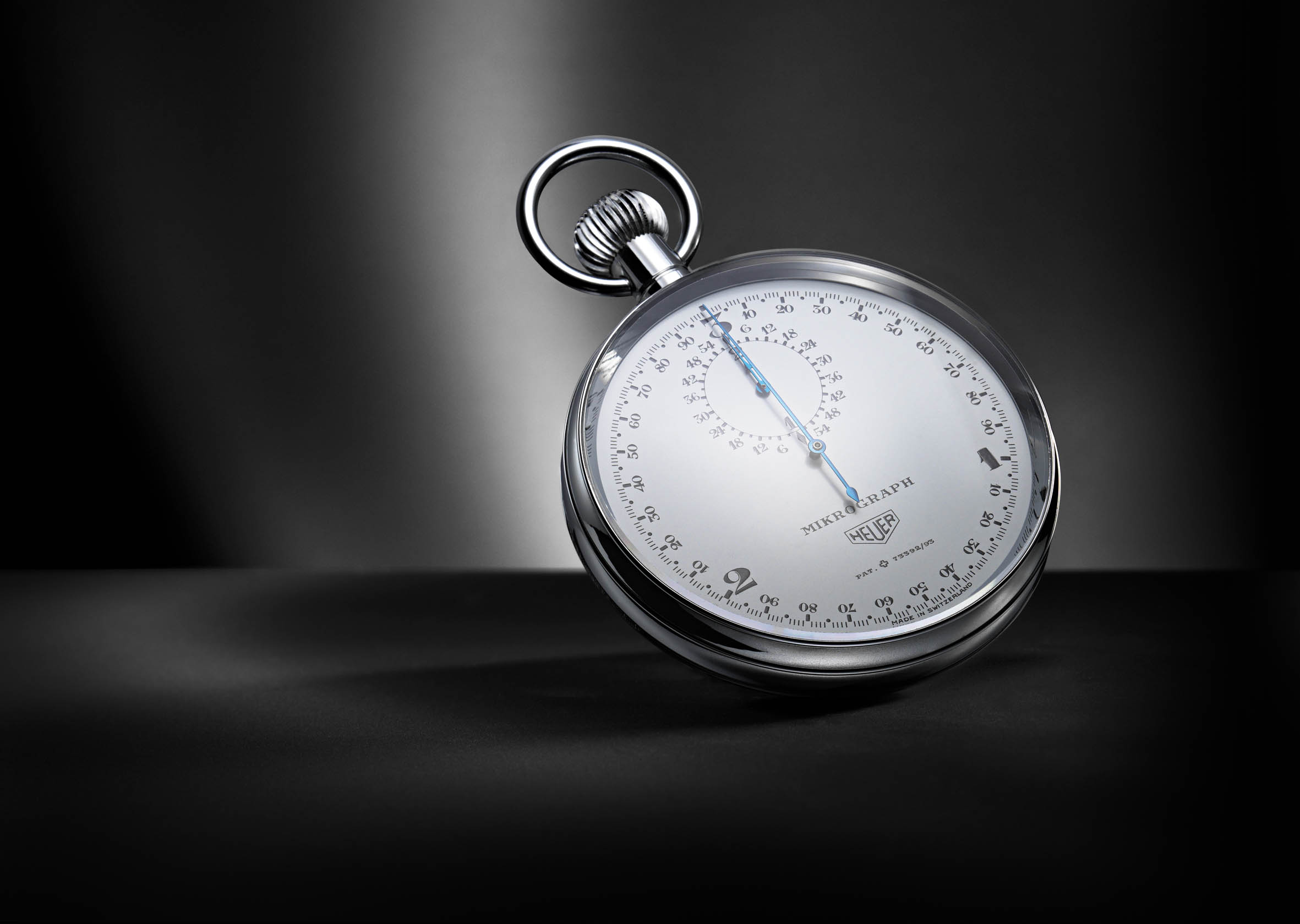
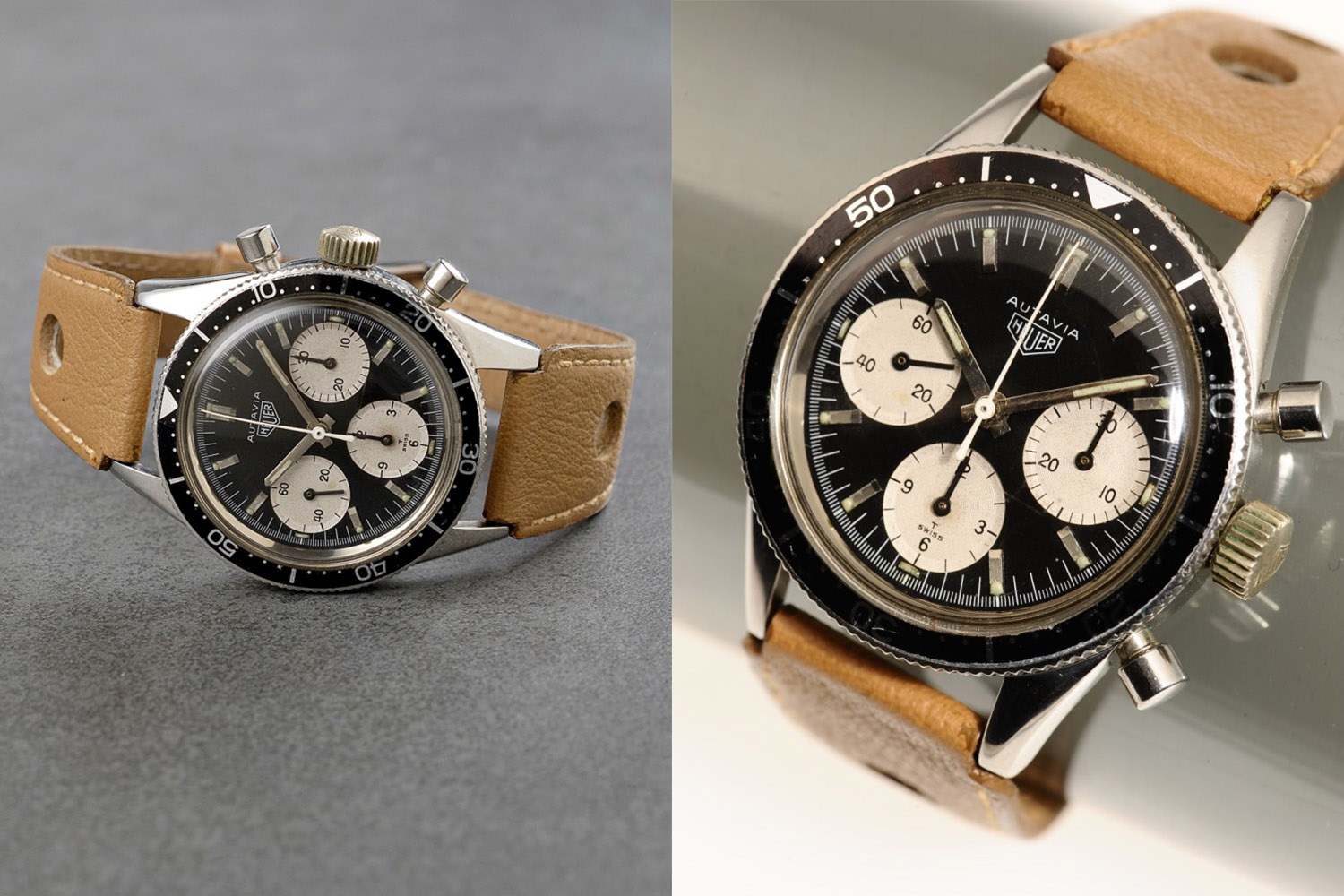
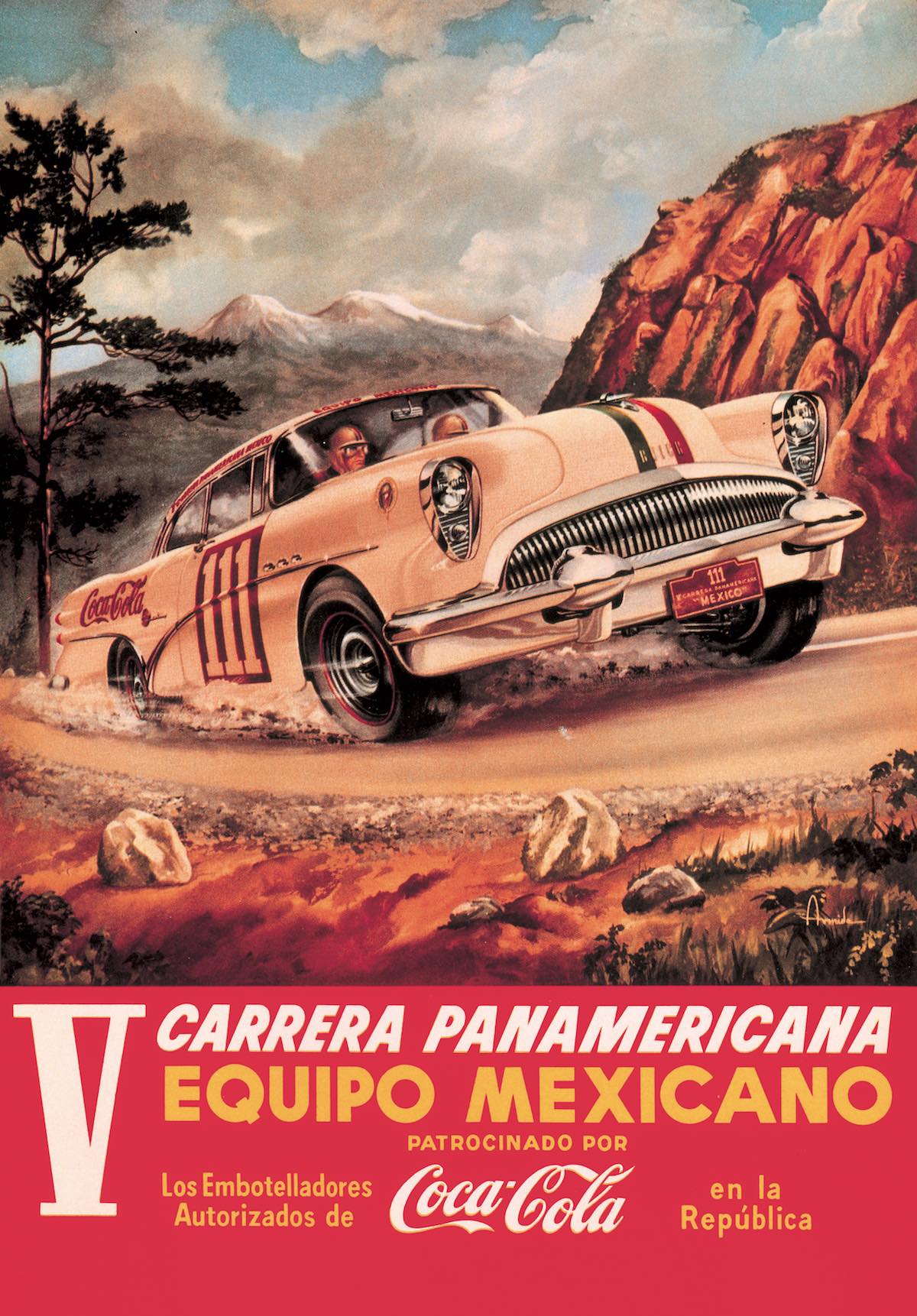




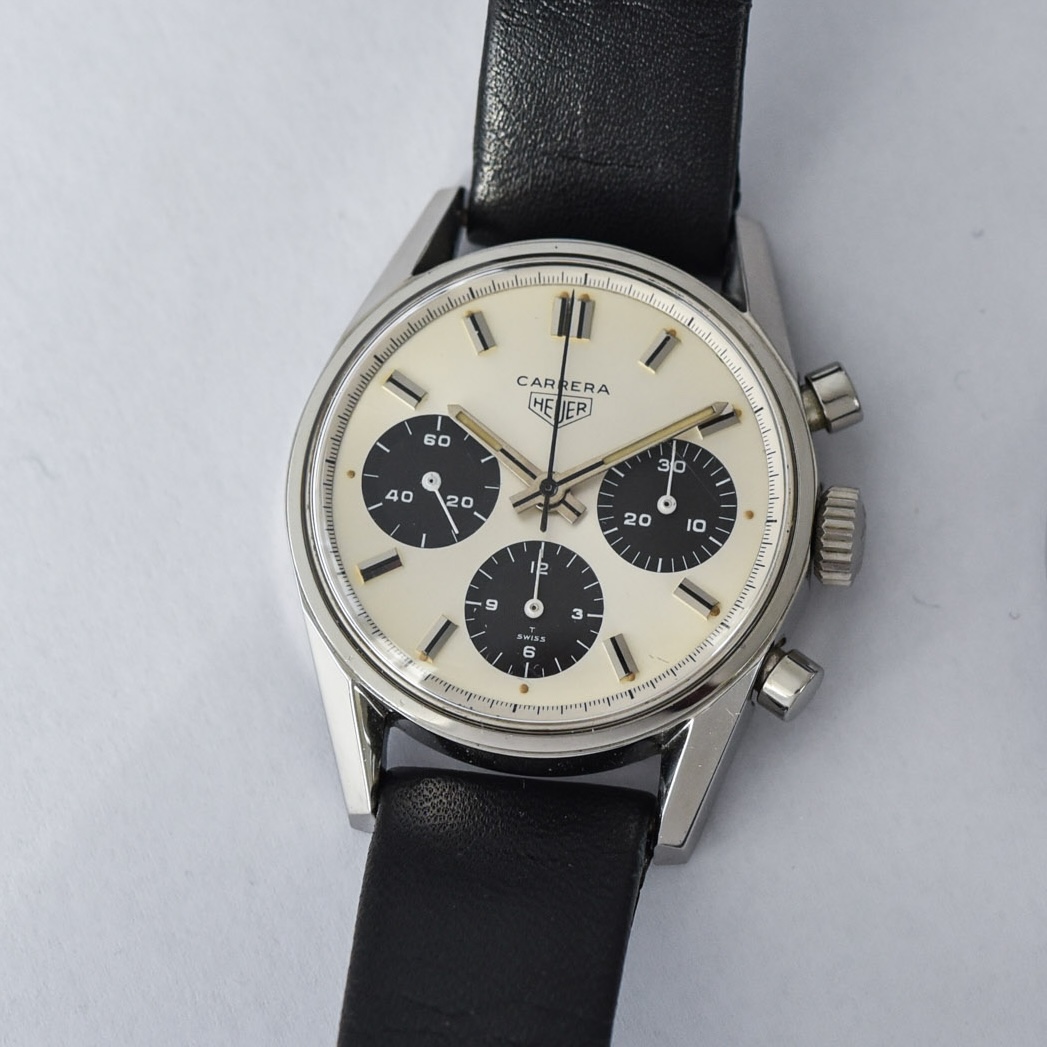
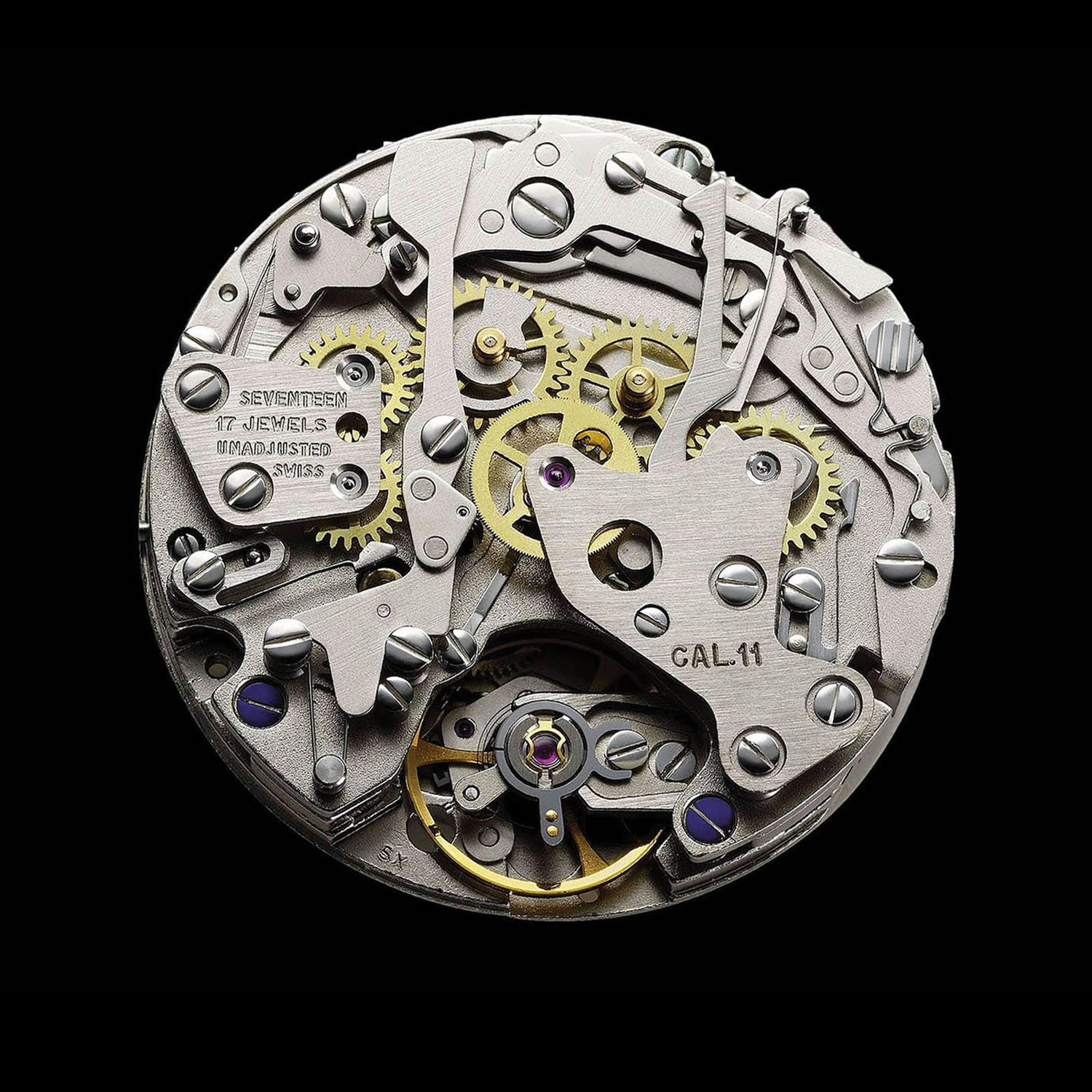


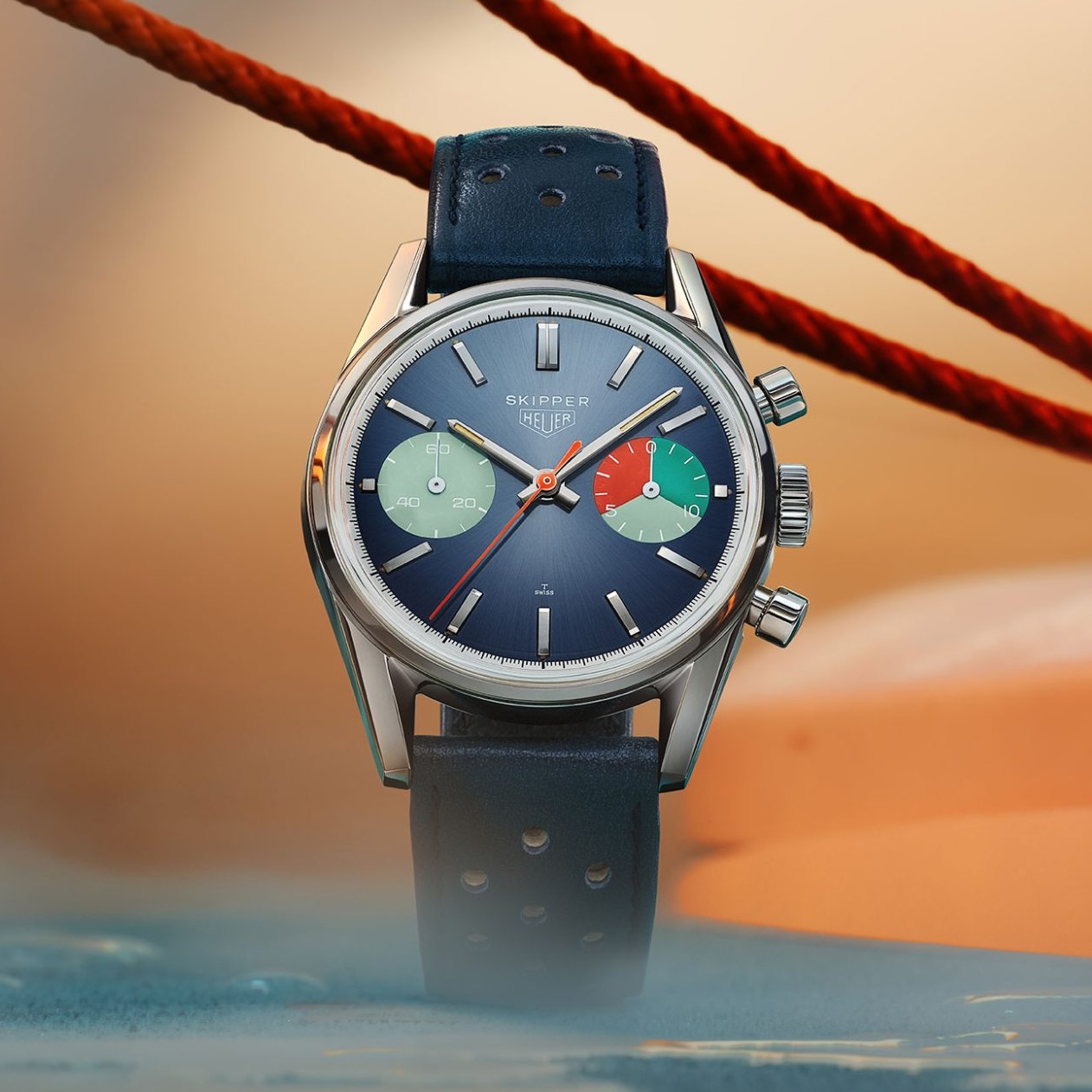
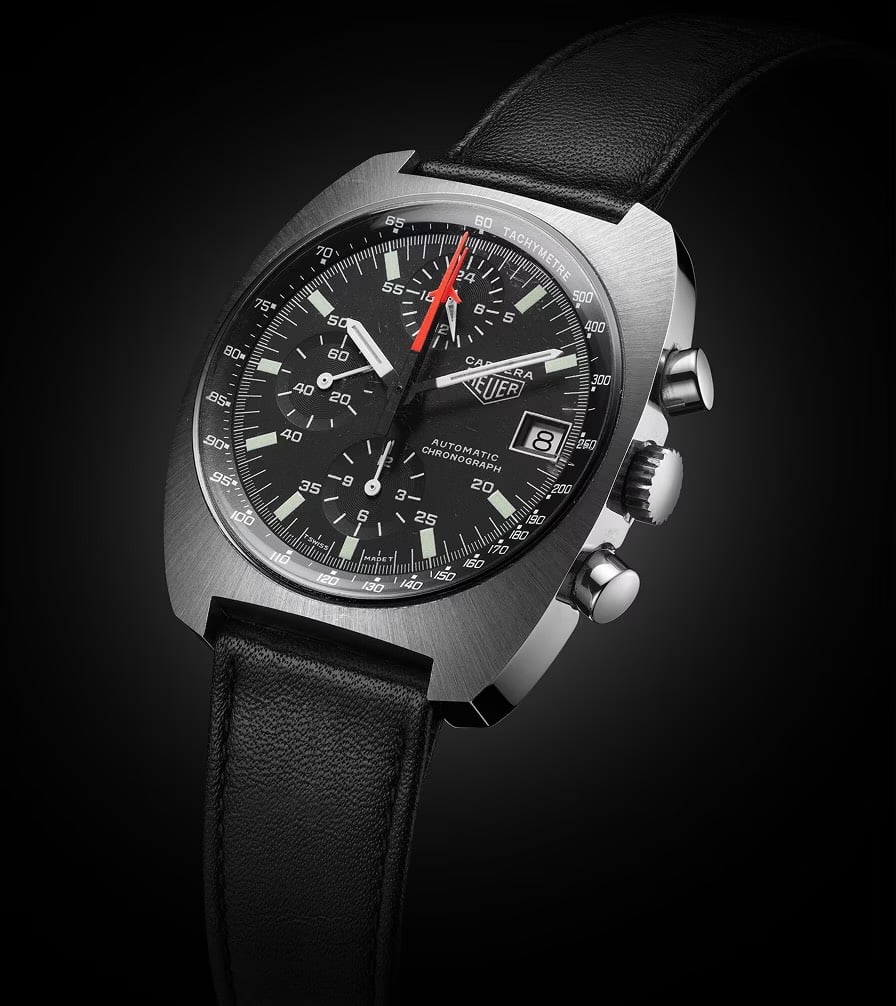
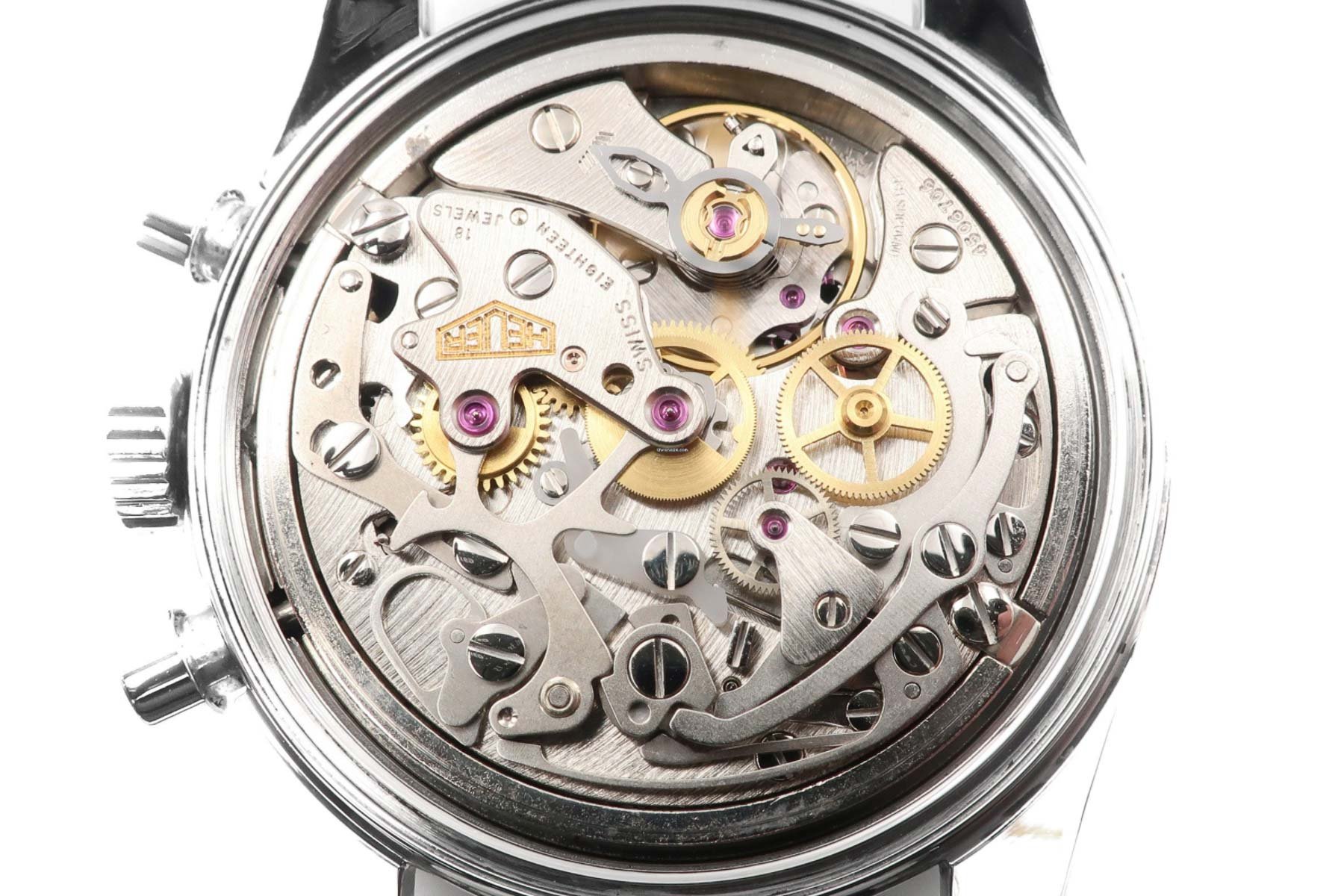
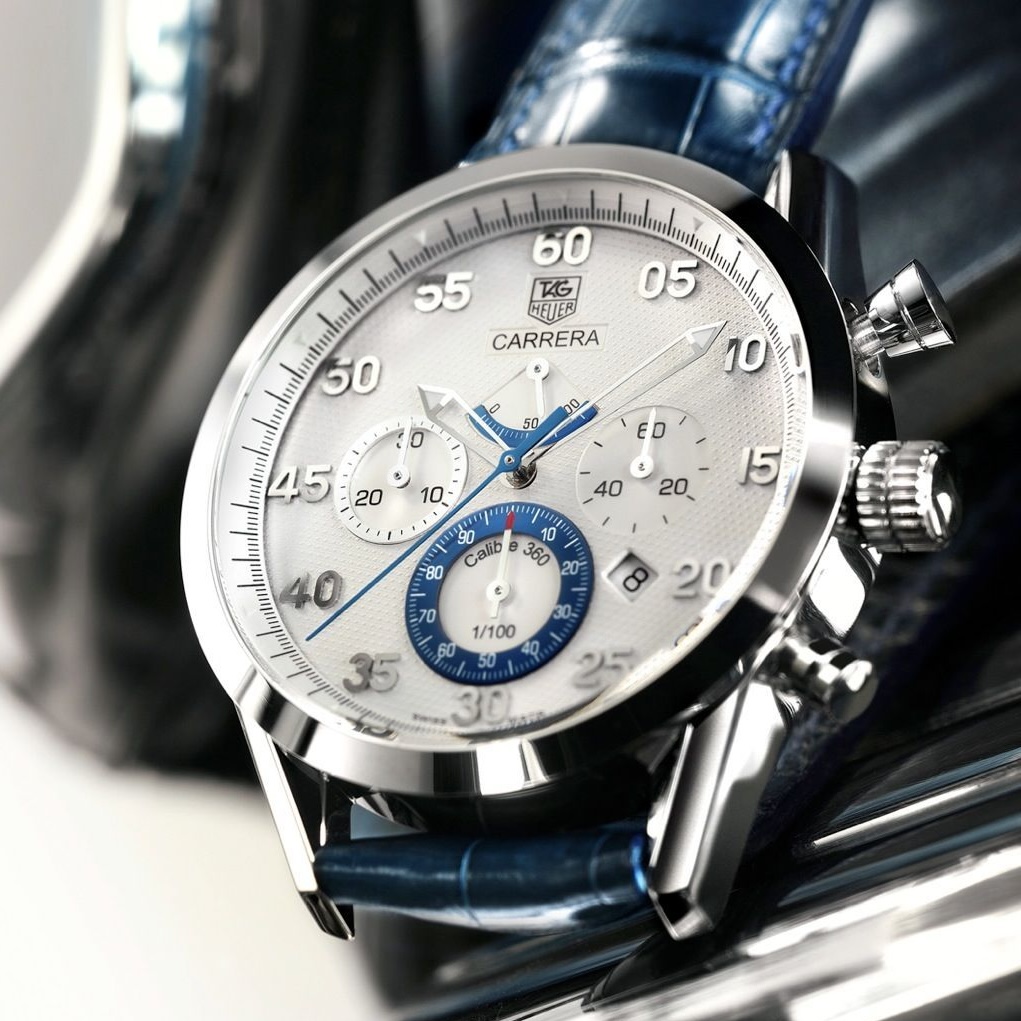


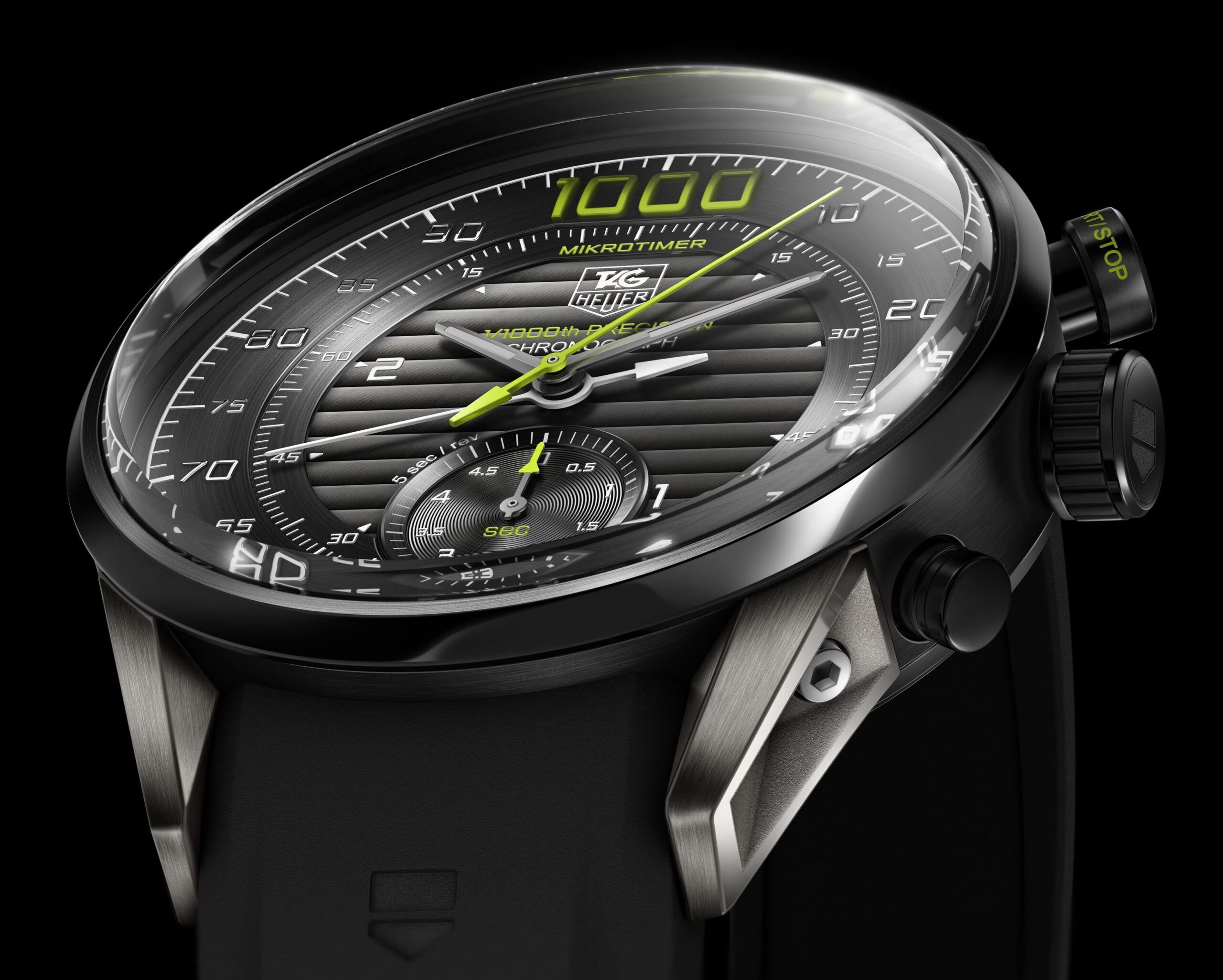
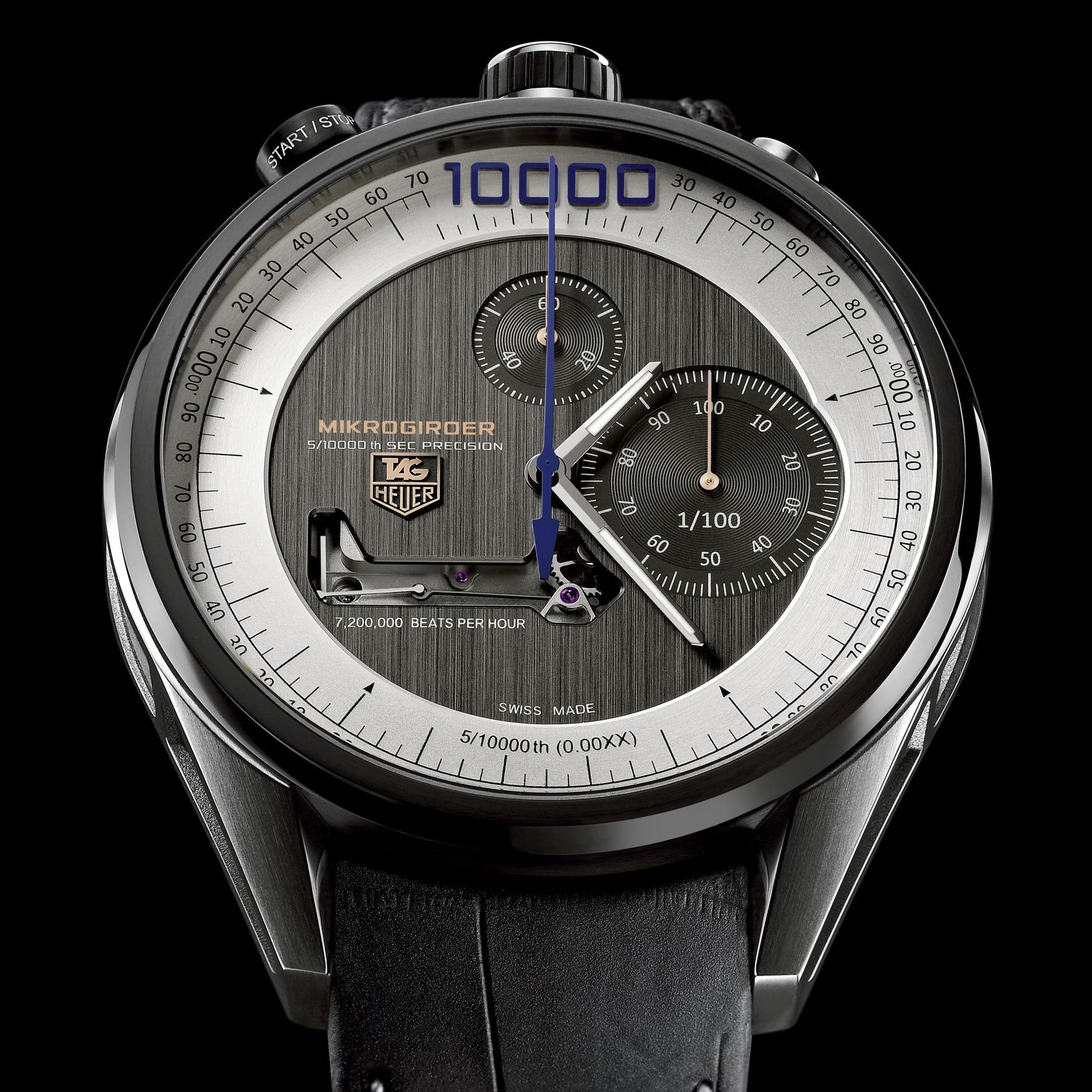
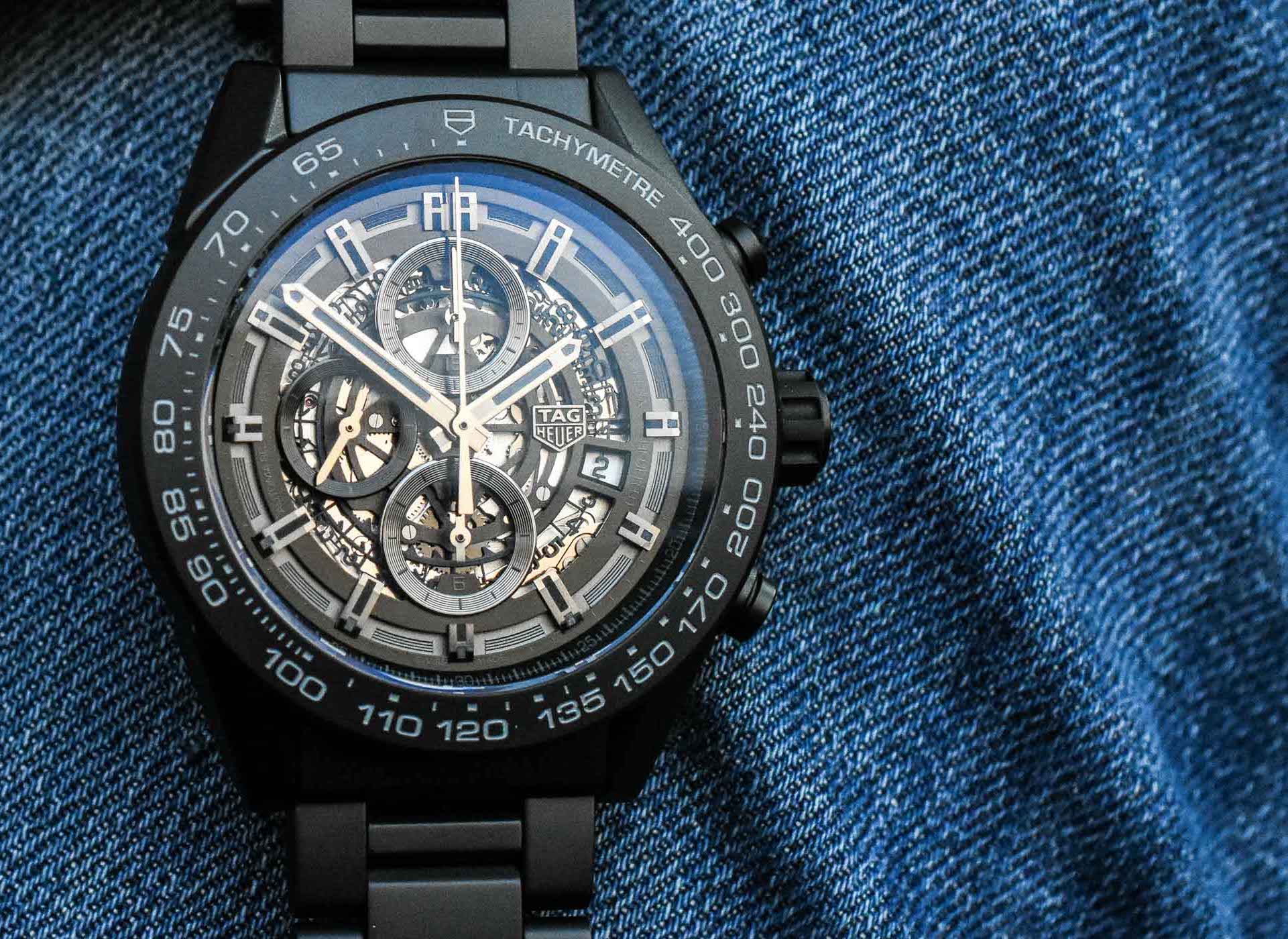


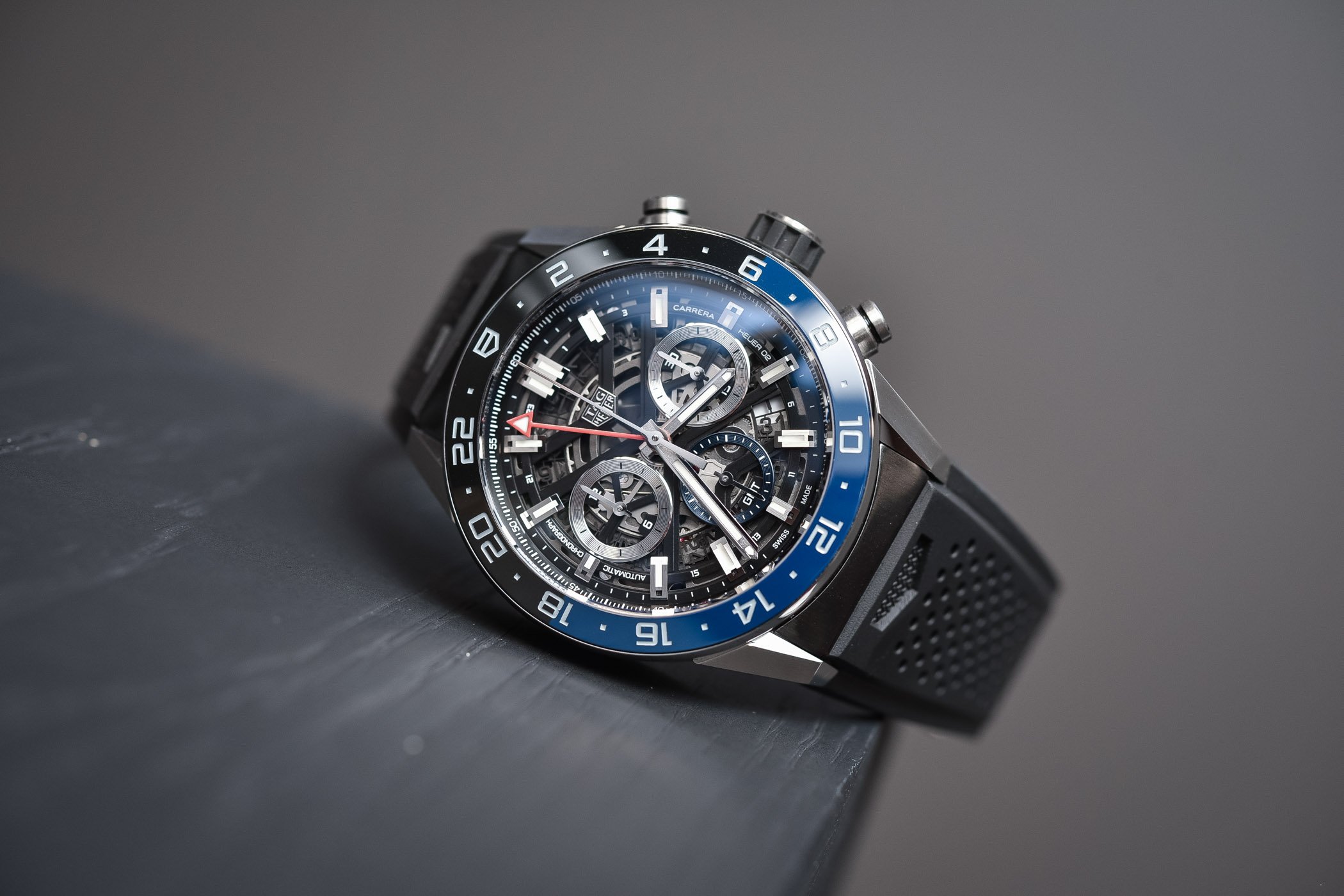
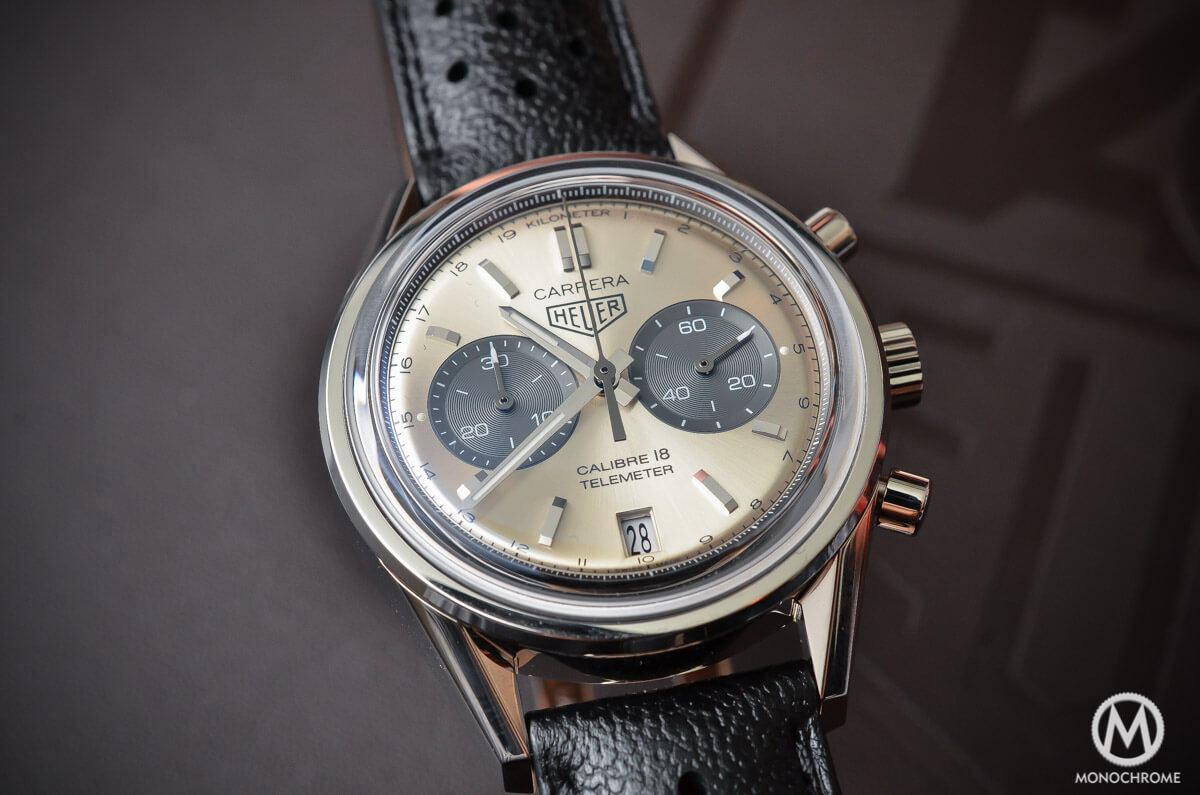
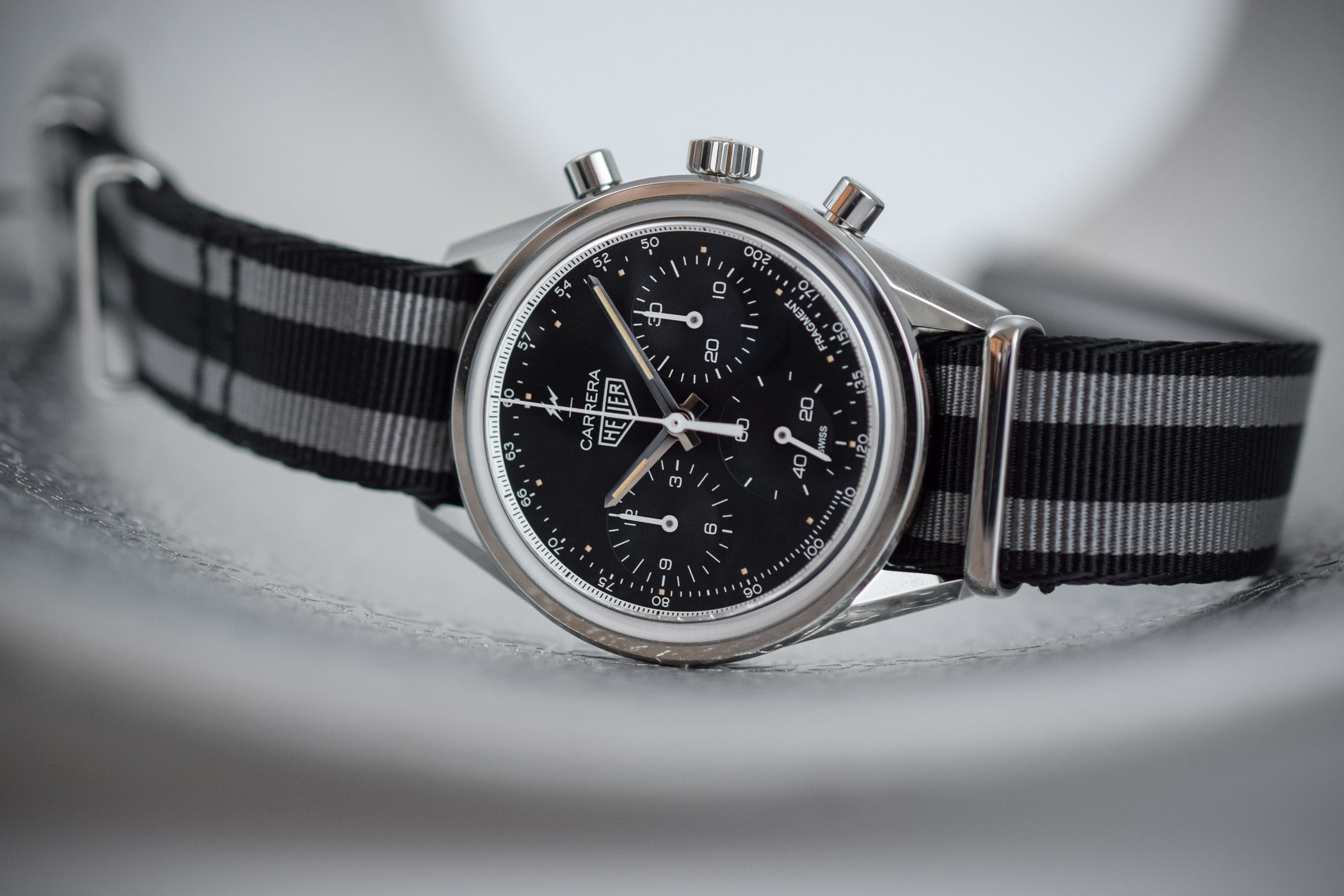


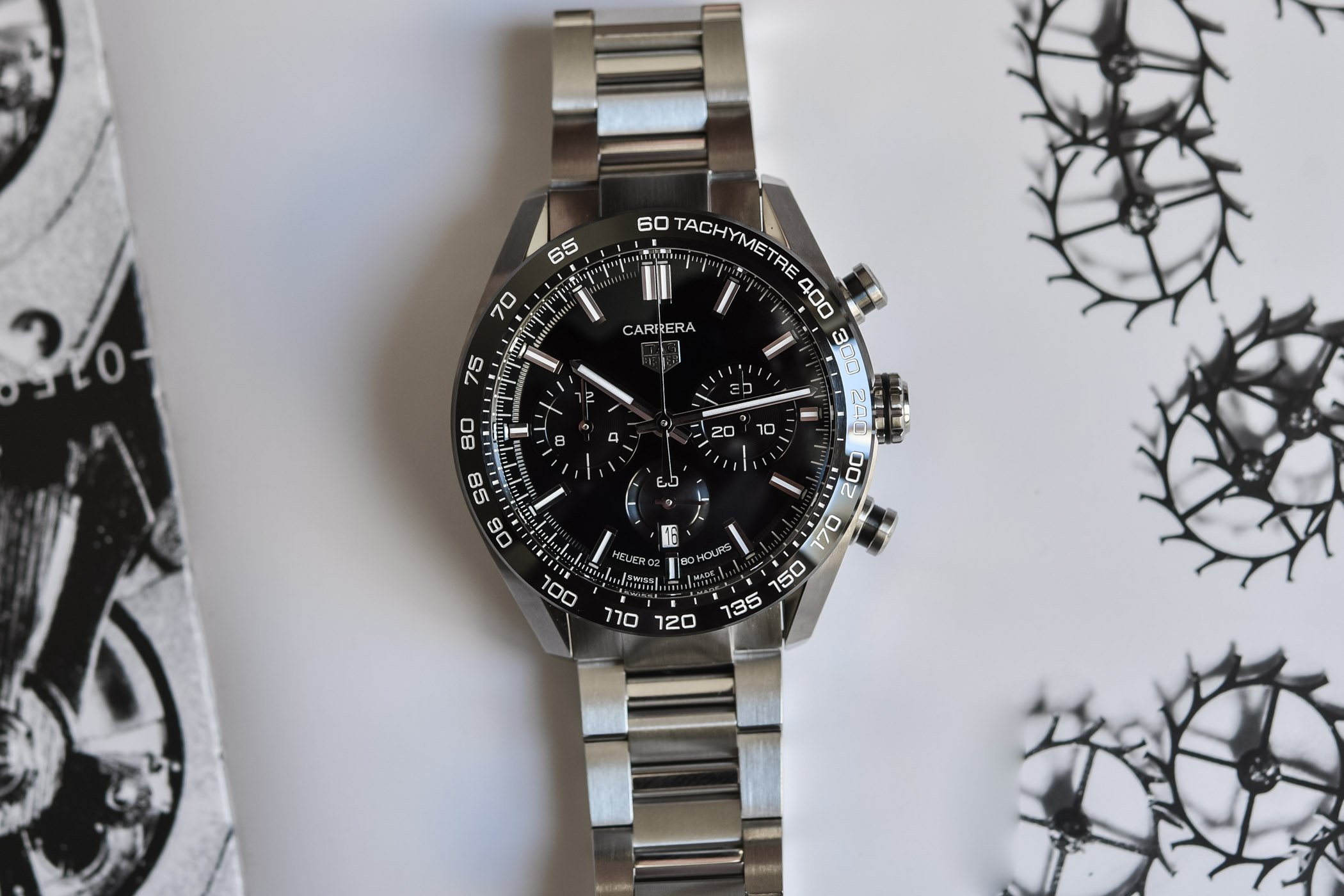
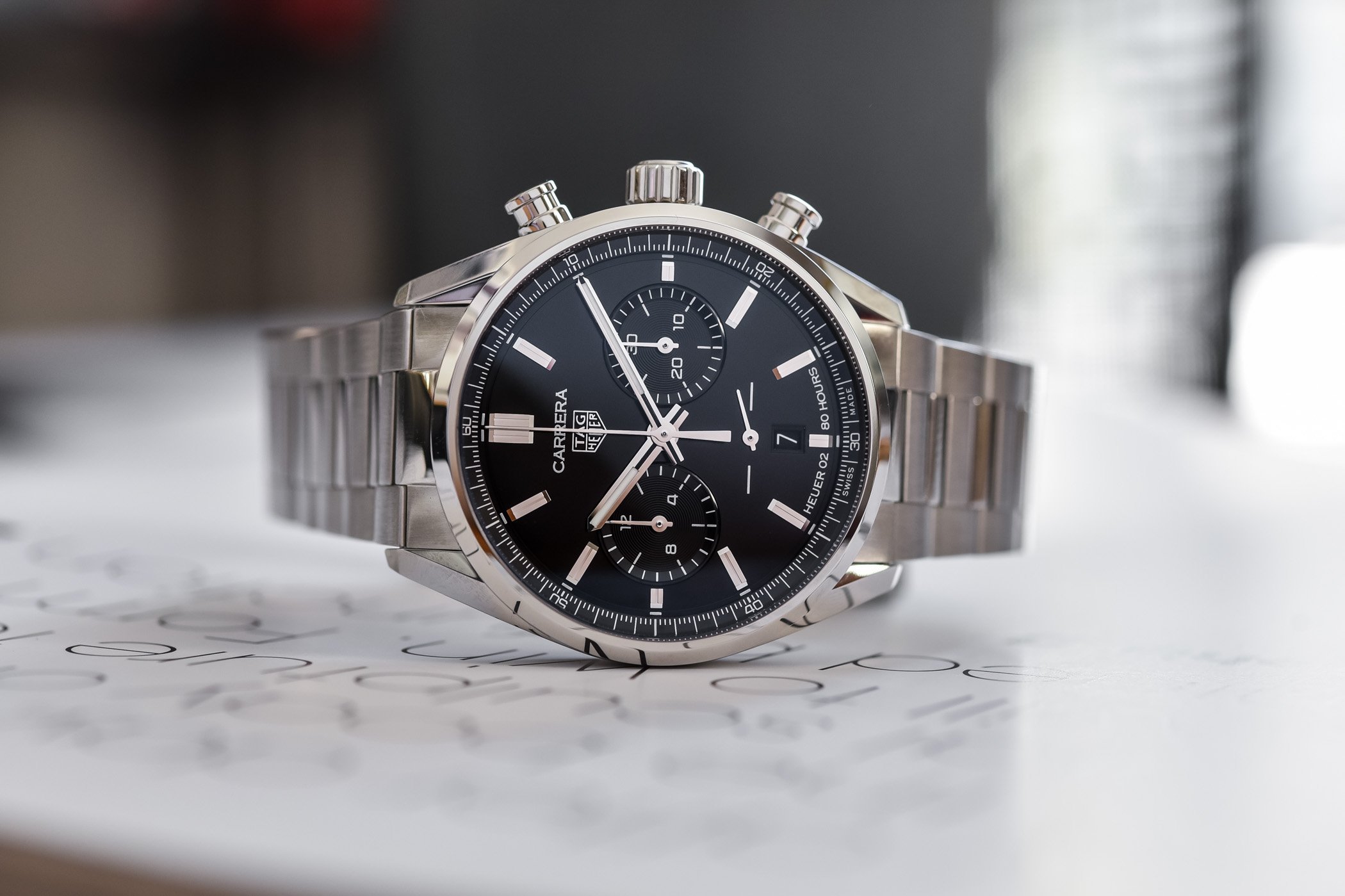

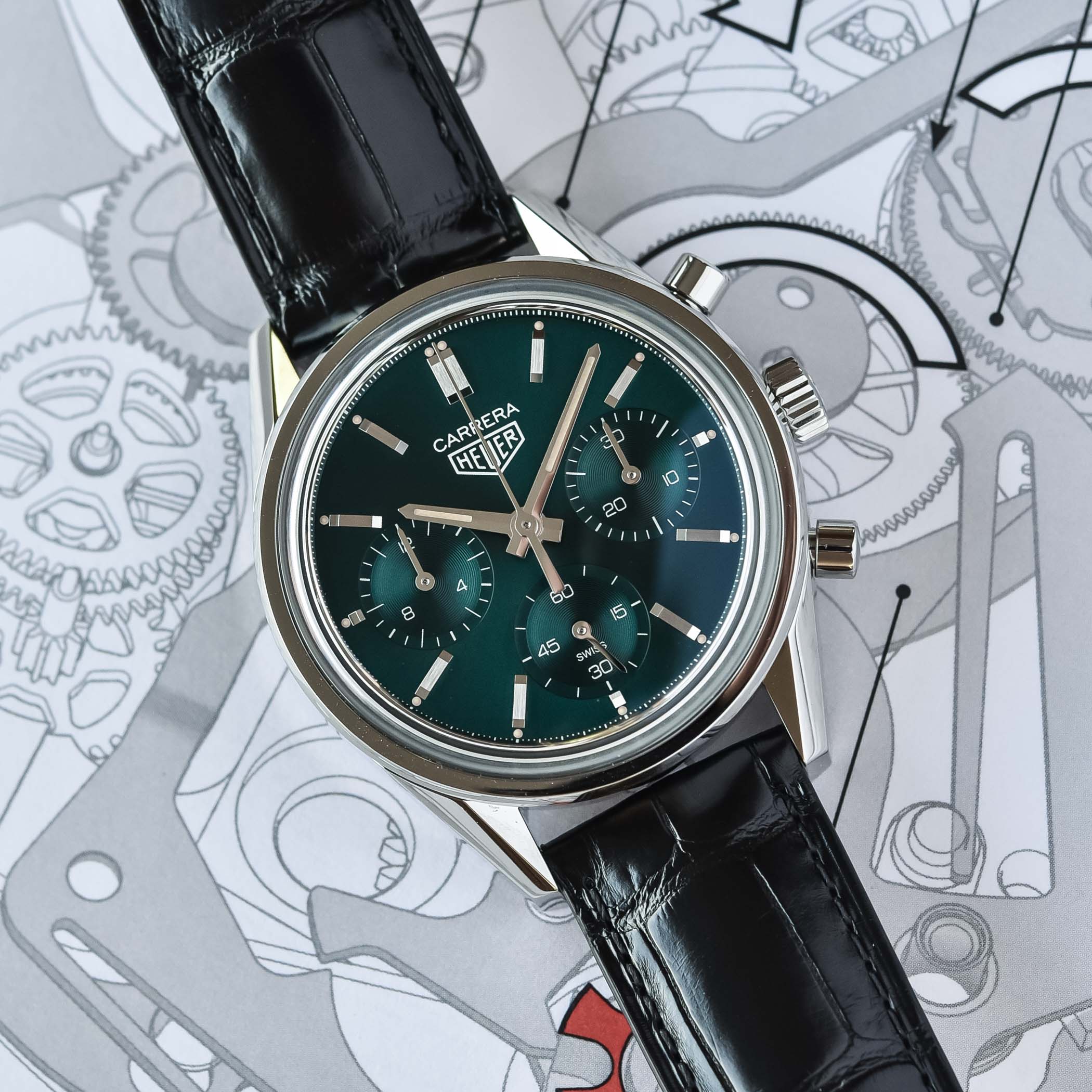
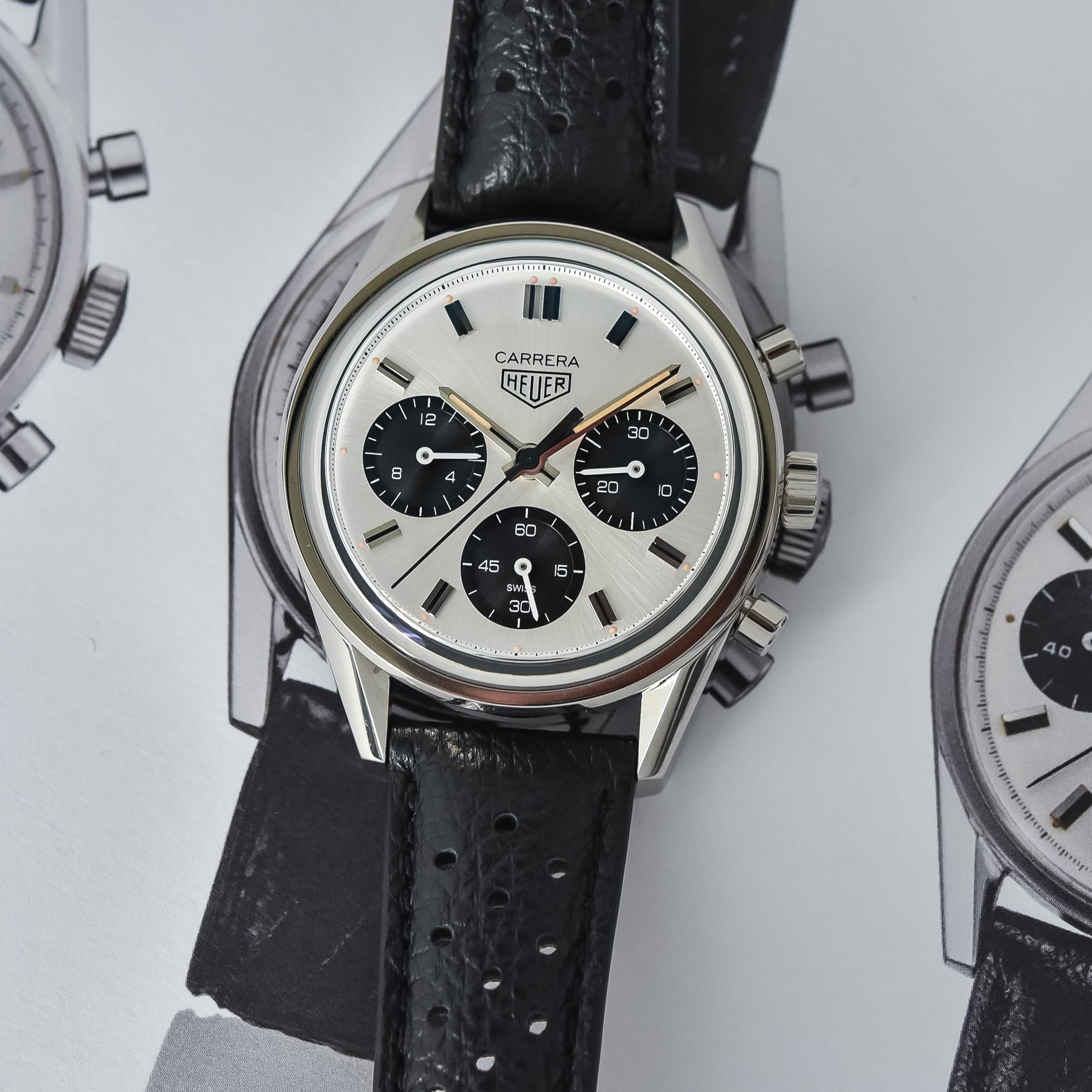


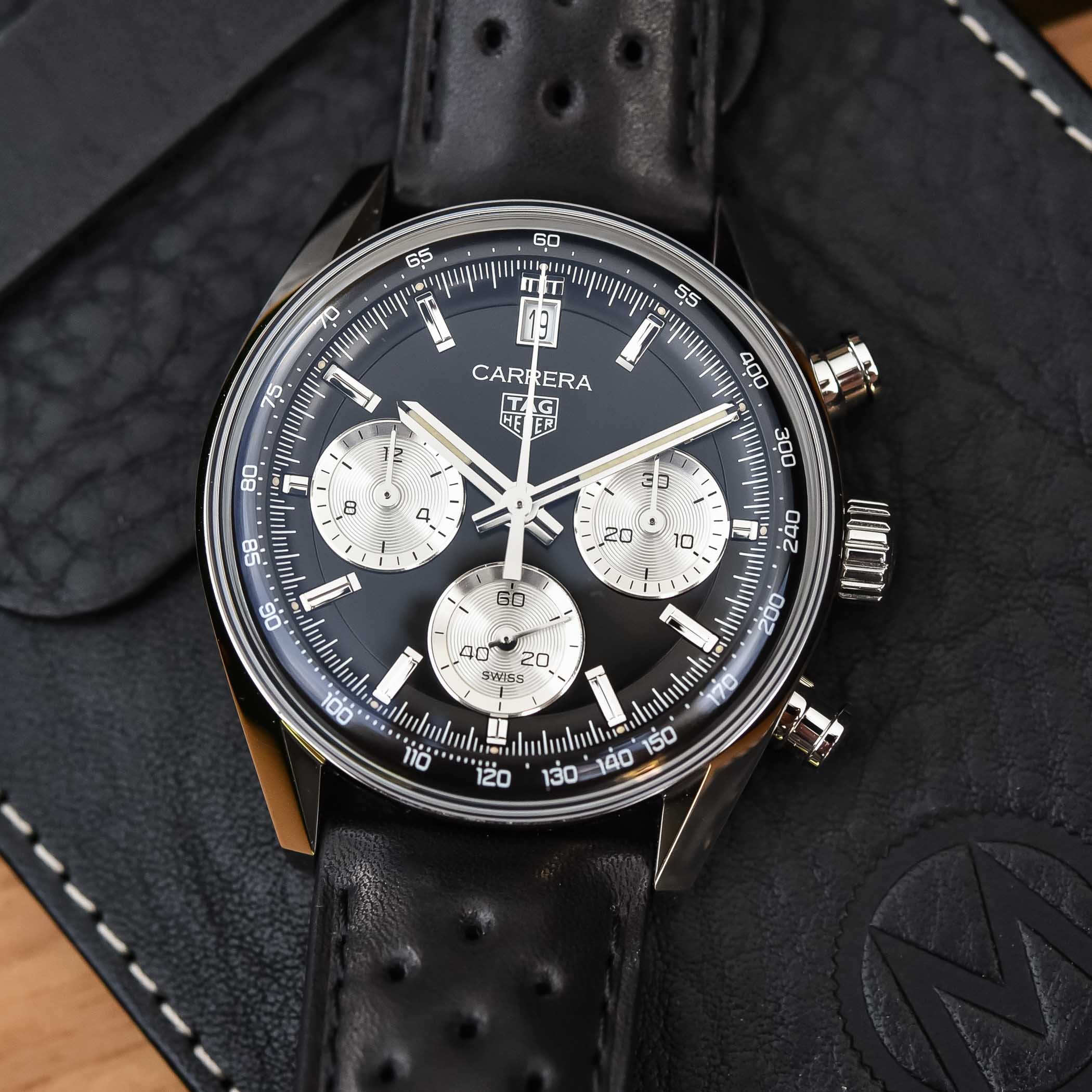
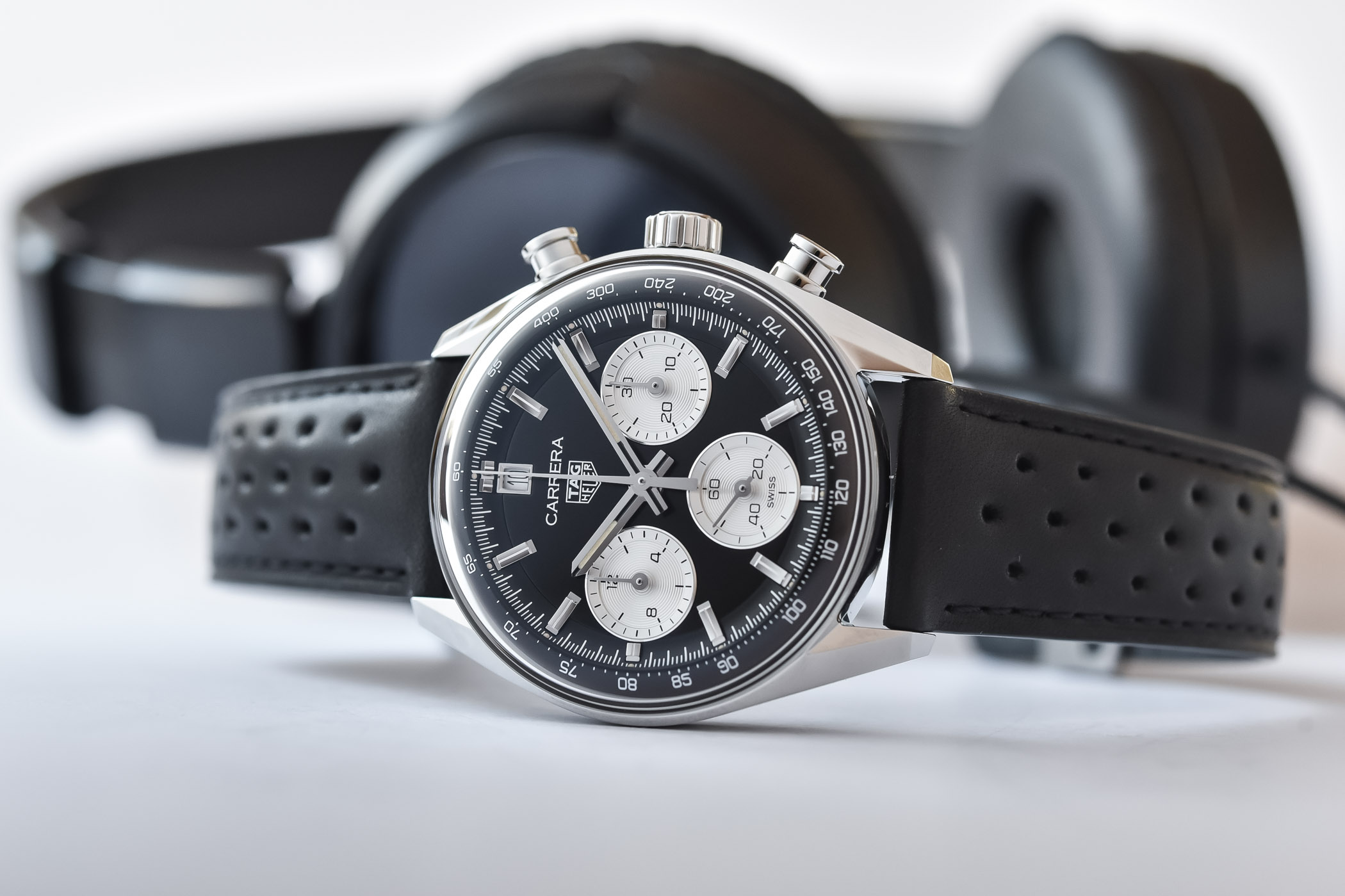


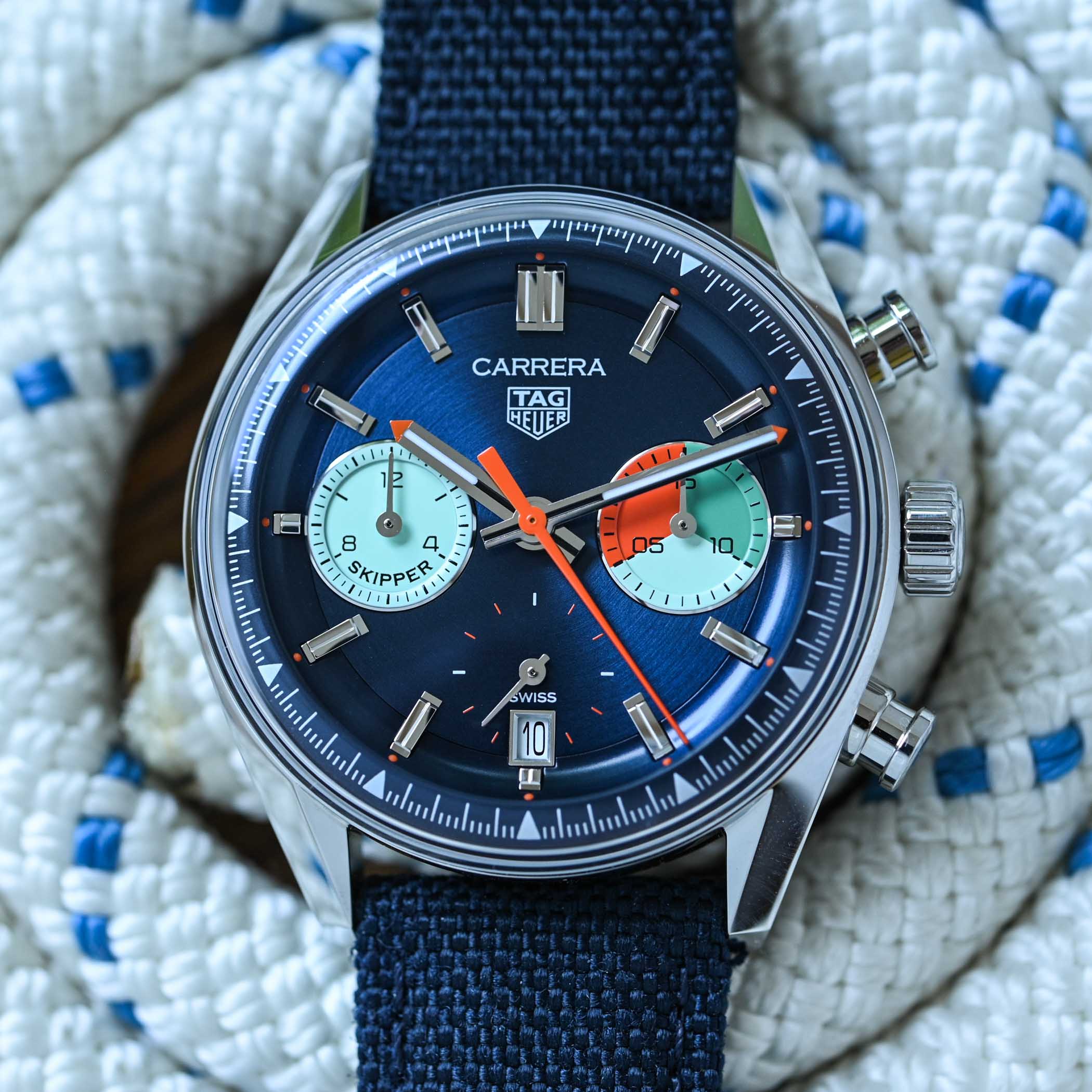





1 response
I would give anything for one of those vintage Carreras. Amazing article, and even more beautiful pics ??